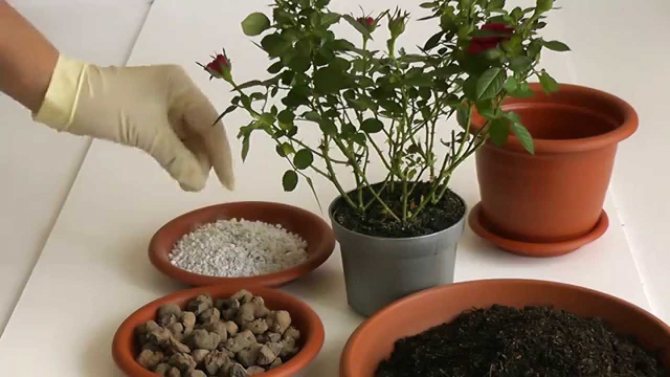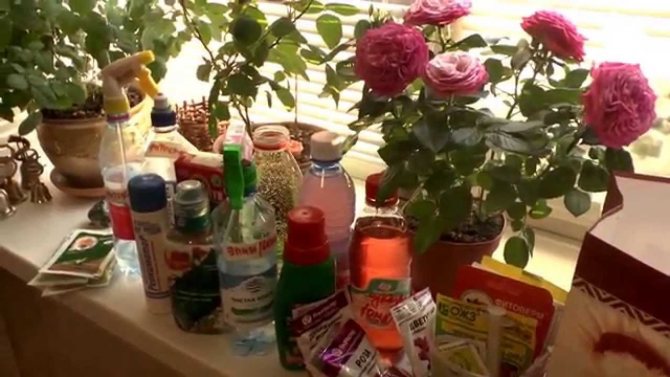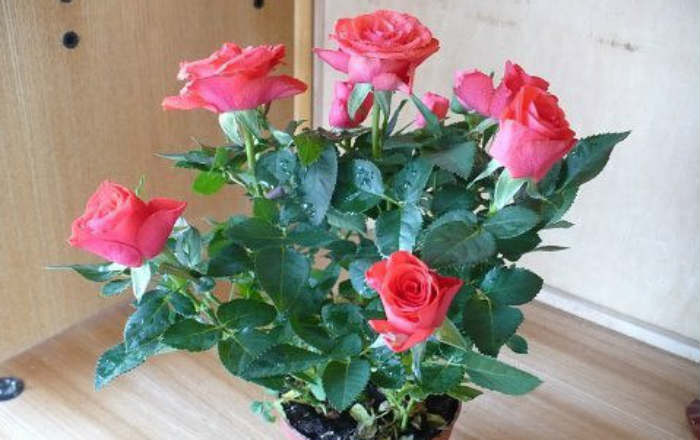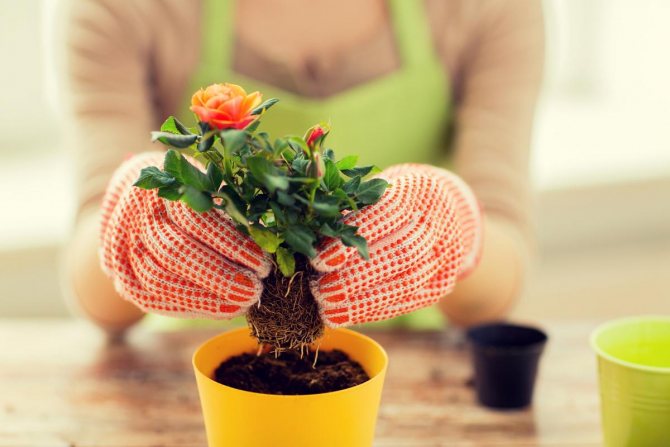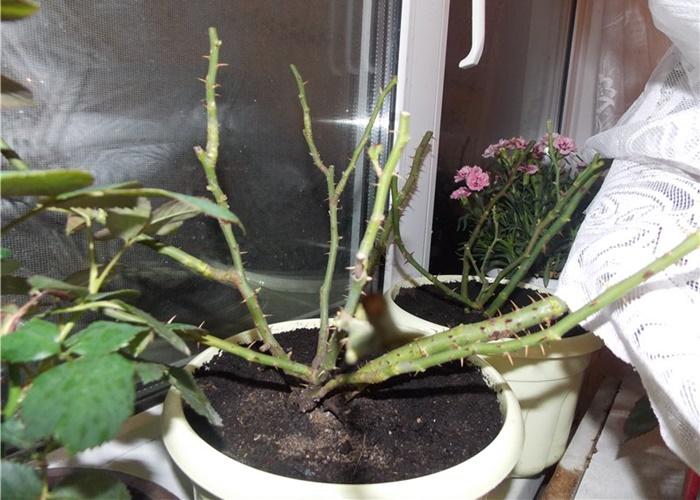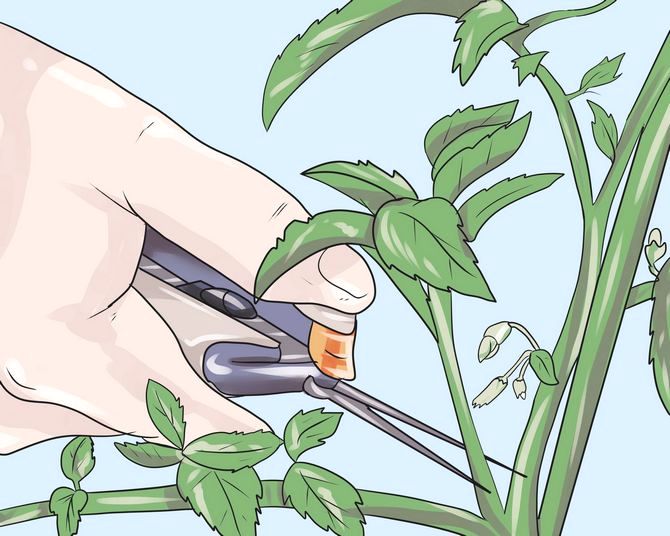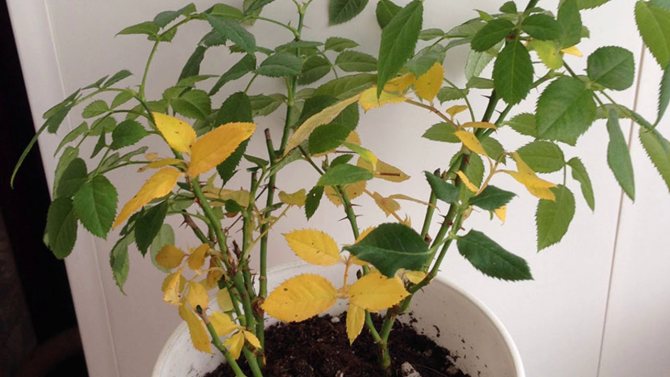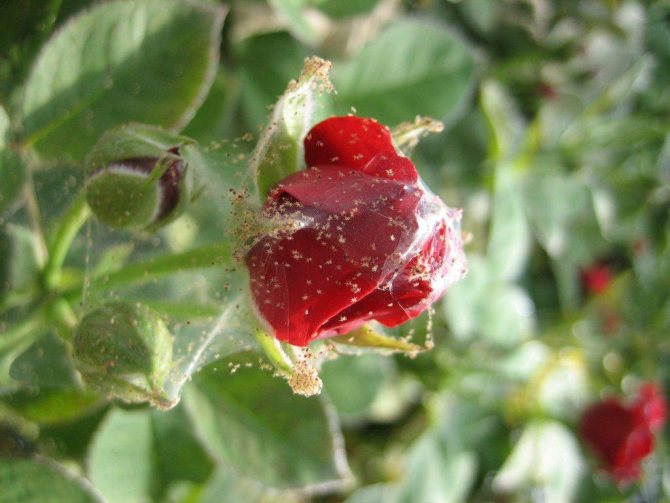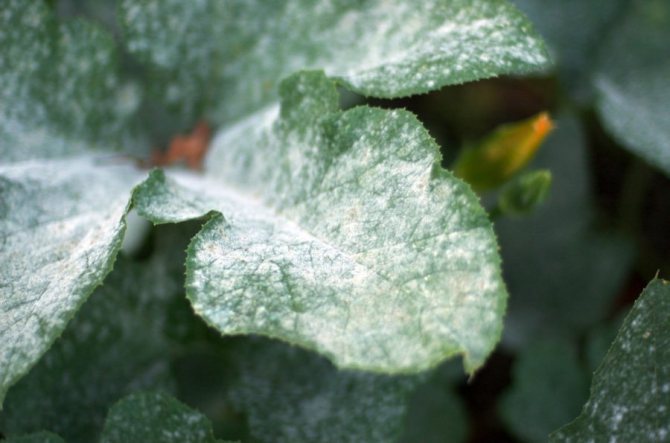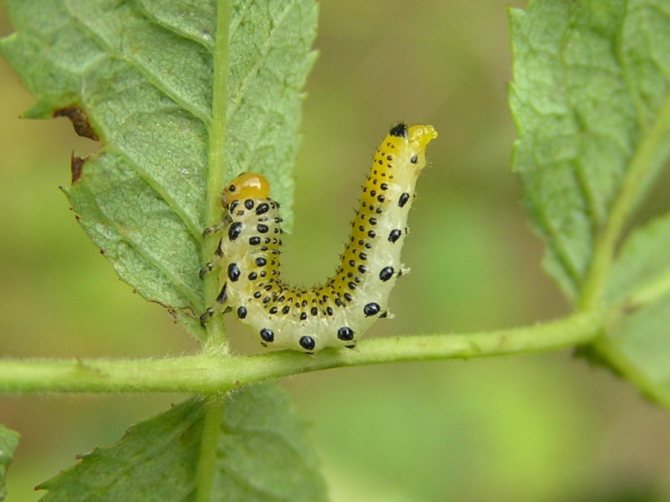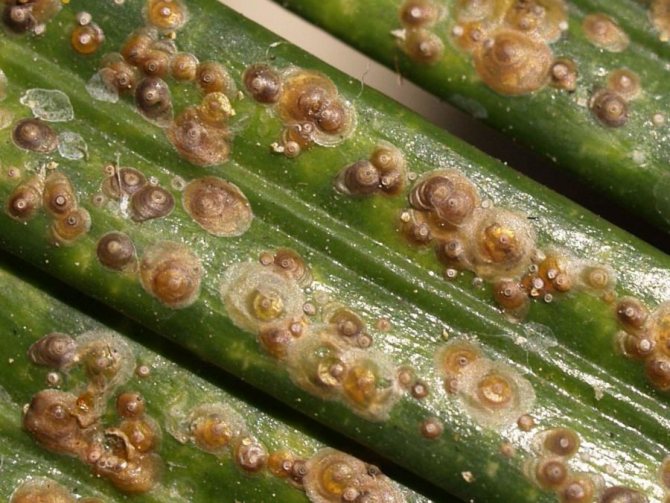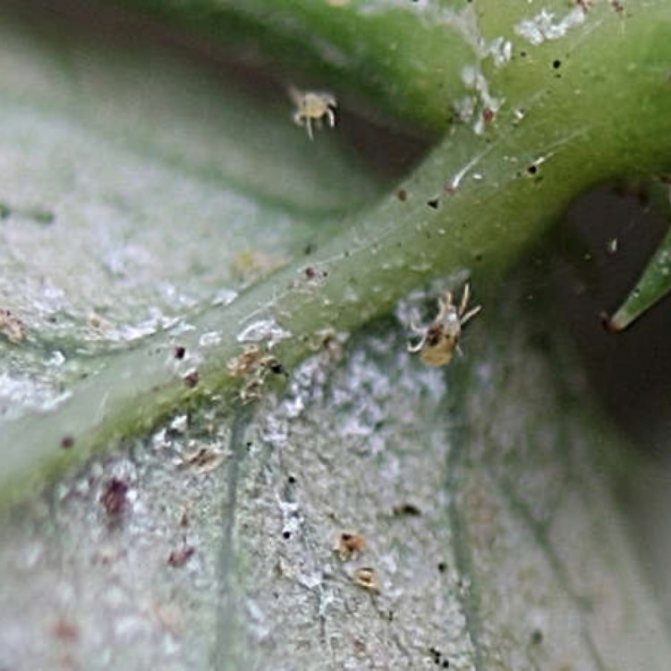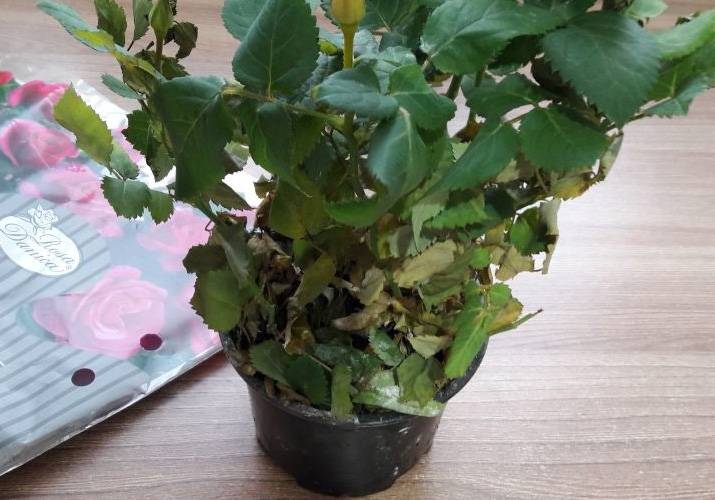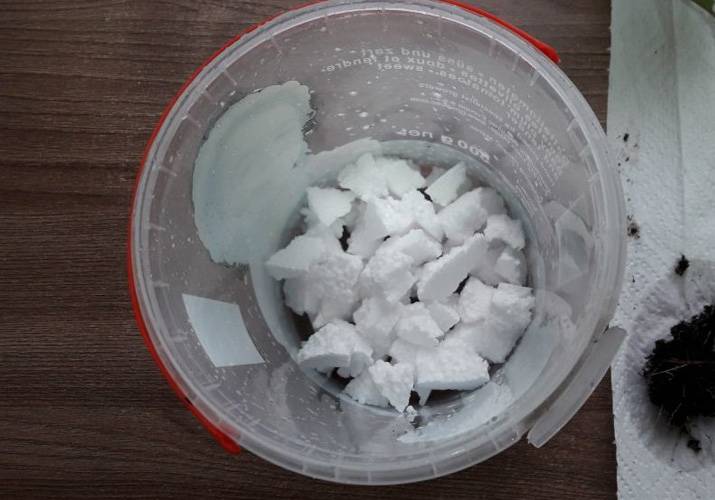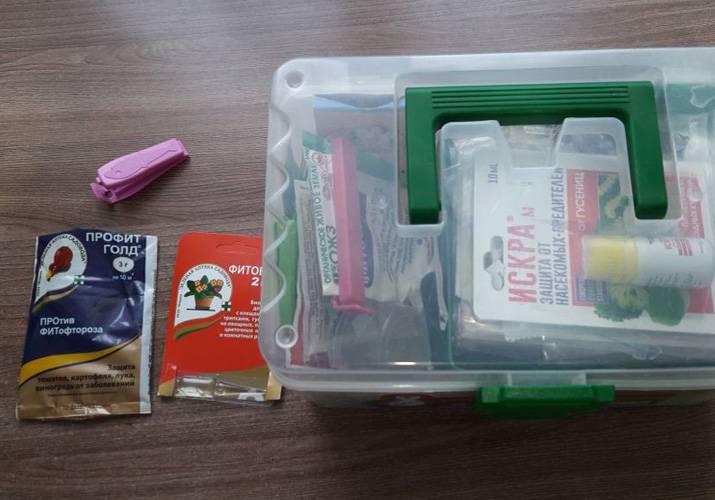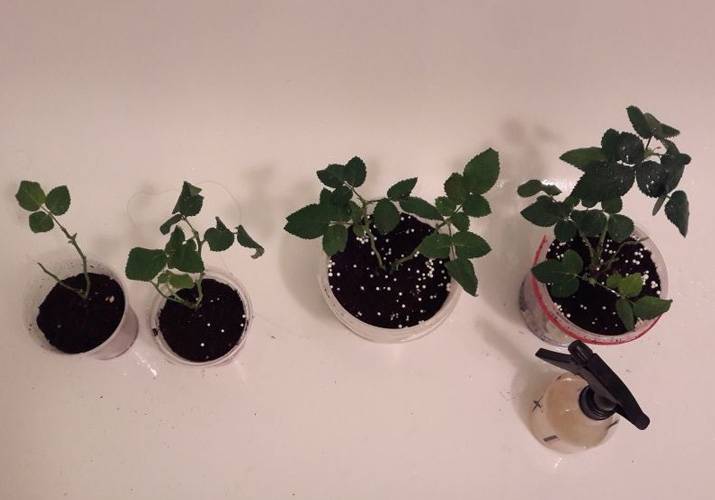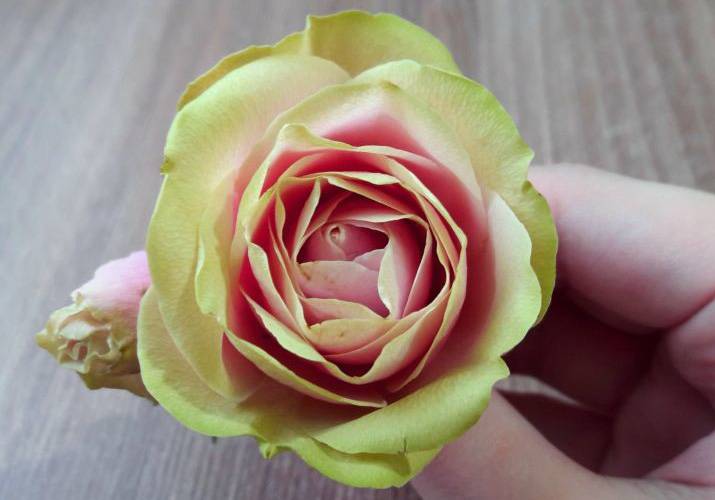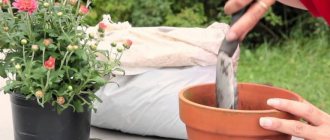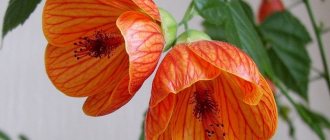
If a rose in a pot begins to dry out, what to do depends on the cause of the poor condition of the plant. These flowers are capricious and require special care. To protect a rose in a pot from disease and wilting, you need to provide comfortable conditions for it. The first measures are taken immediately after purchasing the plant so that it does not dry out after a few days. There are ways and how to revive an already withering plant.
General rules for caring for a rose at home
In growing roses at home, you need to consider the following nuances:
Air humidity and temperature
Roses require relatively cool temperatures in winter and moderate temperatures in summer. For plants, its increase is not so much dangerous as overheating of the soil in the pot. The optimum temperature for roses in summer is up to 25 ° C. At the same time, insignificant daily fluctuations in this indicator will benefit the plants. For the winter period, the plants are rearranged in rooms with a temperature within 15 ° C.
Humidified air is preferable for a rose. In excessively dry conditions, plants are heavily parasitized. In this regard, plants in warm conditions require a single light spraying every 2 days, after which they must dry out.
Note! To get rid of the dust on the foliage surface, the plants are given a short warm shower from time to time.
Soil and pot
The shape of the container is not essential for roses. The pot should only be large enough so that the plants can fully develop and the air can circulate normally. As the roses grow, they are transplanted into other pots with a larger volume.
In decorative terms, plastic is the most attractive, but the earth in them dries quickly, as a result of which the buds wither. Clay pots are also not recommended for use, as moisture quickly leaves them.
Soil for roses at home should be moisture and breathable. It should include the following components:
- 4 parts of humus;
- 1 part of sand and turf soil.
The pot should be equipped with a good drainage system that will allow excess liquid to flow easily through the soil. However, the holes should not be too large so that the water does not flow out too quickly.
Shine
On a note! Like the vast majority of ornamental plants, the rose responds positively to good lighting. However, an overabundance of sun light provokes overheating of plants. To prevent this, plant pots are usually placed on windowsills on the west or southeast side.
In summer, containers with flowers, if possible, are taken out to the terrace or balcony, where fresh air is available to them. This is to prevent direct sunlight from reaching the foliage. If this is not possible, you should move the pot to another window sill or shade.
Tips and tricks from experienced florists and gardeners
Before you start breeding roses, you need to decide on the type and variety. A correctly chosen seedling is of great importance.
When choosing seedlings in a store or on the market, be sure to pay attention to the shoots:
- Green colour;
- stems are strong and resilient;
- the bark should be intact, without folds, breaks and spots
Well-developed and healthy buds are a sign of quality rose seedlings. The leaves should be deep green on the inside and outside.
Attention! Seedlings of a high category have at least three shoots, of which 2 grow from grafting. The high quality seedlings have a tag attached with information about the variety. This is worth paying attention to when choosing roses.
Experienced gardeners plant roses between early September and mid-October. But in cold regions, it is preferable to do spring plantings. When planted in autumn, immature roses, with an undeveloped root system, may freeze.
The best soil for roses is slightly acidic or neutral. Roses take root deeply, therefore, for planting seedlings, a hole must be prepared no smaller than 60 cm.
Before planting a flower, you should prepare it. Too long roots cut a little with sharp pruning shears, and remove all dry ones completely. A few hours before planting, the seedlings should be lowered into a bucket of water.
Important! The filamentous roots should never be touched.
Fading inflorescences must be cut off without waiting for them to wither. This stimulates the bush to further bud formation.
Rose bushes abundantly strewn with flowers will decorate any garden, will bring joy to a flower lover, his household and guests.


- south and south-east windows and balconies;
- nutrient soil;
- fresh air during the warm season;
- abundant watering during the active growing season (as the soil dries out);
- feeding once a week during growth and flowering;
- transfer from a cramped pot to a more spacious one (if necessary).
- cold irrigation water;
- overheating in the heat;
- leaving withered flowers on the plant;
- trauma to the roots, if the earthen coma was destroyed during transplantation;
- the appearance of pests and diseases;
- warm wintering.


General rules for caring for a rose in the garden
I plant roses in open ground, the following should be provided:
Seat selection
The place for a garden rose should be well lit. When planting several bushes at once, they should be placed so that low plants are in the foreground, and the taller ones are shifted back to avoid shading. In shady conditions, garden roses grow much worse, they practically do not bloom, and dark spots form on the leaves.
On a note! To avoid the development and spread of fungal diseases (primarily powdery mildew), the plantings should be provided with a sufficient level of air circulation, however, a strong draft is no less dangerous for roses.
The soil on which the roses will be cultivated must be well loosened beforehand. The soil should be saturated with nutrients, and the depth of the fertile layer should be at least 40 cm. Swampy areas are absolutely not suitable for plants. Plots with shallow groundwater should be avoided.
Preparing the soil for planting
The most effective way to prepare a site for planting roses is at the same time the longest. In this case, old newspapers are used, which are laid out on the surface of the plot in 8-12 layers and fixed with something so that they do not fly away. In this state, the plot is left for 2 months. During this period, all weeds will die under such a shelter, and the soil will be greatly softened and it will be easier to dig up.
After that, you need to determine the acidity of the soil. The optimal pH level for roses varies from 6 to 7. If the soil is acidic, the situation is corrected by adding lime.
Next, a planting hole is dug into which fertilizers are added.If superphosphate is used in their quality, you need to make sure that the drug does not come into direct contact with the roots of the rose. The substance is placed in a hole, covered with earth, and only after that the plant is placed there. In most cases, a drainage system is formed in the hole, for which large crushed stone, branches, expanded clay are used.
Note! It is also recommended to pour 250 g of bone meal into the hole.
Landing
If roses are planted in spring, you need to wait until the soil is warm enough after thawing. In most regions of Russia, the optimal period for planting roses begins in the last April decade and lasts until mid-May. Nor should it be tightened with the landing. At the end of spring, the soil heats up quite strongly, and it will be difficult for the plant to root and grow normally in such conditions. Even when rooted, the plant in such conditions outdoors will be weak, and will begin to throw off leaves and buds.
It is allowed to carry out planting in the autumn. To do this, select the period from the second September decade to the second decade of October. At this time, the weather is relatively warm, the soil has not yet cooled down and contains a significant amount of moisture. At the same time, in regions where autumn is rarely warm and long-lasting (in Siberia), the planting dates are shifted to the end of August-September.
To plant or transplant a plant in the fall, you need to prepare a planting hole a month and a half before the procedure. In any case, at least 20-30 days should pass after planting and before the first frost begins.
For your information! The hole must be large enough for the plants to feel free. On fertile soils, a pit depth of half a meter and the same width is sufficient. In clayey areas, the width remains the same, but the depth increases to 60-70 cm.
When the hole is ready, water is poured into it and wait until the liquid is completely absorbed. After that, plants with a closed root system are placed directly into the hole. If roses have open roots, then their tips are shortened by a third, and then placed in a solution of water or a root formation stimulator for several hours.
Preventive measures
In order for your favorite flowers to grow magnificently and delight the eye, you need to take care of proper care. In addition, it is imperative to take preventive measures. It is easier to prevent diseases than to cure them later.
Preventive methods in caring for rose plantations are in the right place for planting. Plant in well-lit and ventilated areas, on fertile soils, having prepared the place in advance.
Timely feeding with mineral and organic fertilizers is very important. Without dressing, flowering will not be lush.
Make sure that pests and diseases do not appear. Even a cursory examination of the stems reveals the problem.
Correct and timely pruning of the stems is necessary so that the rose garden is well ventilated and illuminated by the sun.
Why does a rose have dry leaves
Most often, the rose dries and sheds its leaves as a result of the negative effects of diseases. The most harmful among them are the following:
- Powdery and downy mildew (peronosporosis) mildew. The main symptom is a whitish coating. The edges of the foliage of a diseased plant begin to dry out and fall off after that. The affected plantings are treated with preparations based on copper. For prophylaxis, roses are sprayed with Bordeaux liquid from time to time. Peronosporosis usually appears as dark markings affecting young foliage. Adult leaves are covered with lightish spots, which outwardly resemble signs of powdery mildew. As the disease progresses, the spots turn crimson, and the leaves dry.To save the plant, substances with copper and zinc are used in the composition, and prevention involves the introduction of phosphorus-potassium fertilizers during the potential period of damage.
Powdery mildew on roses
The rose dries and sheds leaves and under the influence of pests. So, this is most typical for the spider mite. Also, the answer to the question of why the rose withers and dries may be the effect of insects such as:
Sawfly pest of roses
The grower is required to constantly monitor the plantings and respond to the manifestation of symptoms of the presence of pests. It is necessary to use exclusively clean and disinfected soil (in particular, this applies to the sandy ingredient).
When asked why the leaves of a garden rose dry, it should also be answered that when cultivated in open ground, roses are often affected by small animals such as mice and moles. They interfere with the normal process of feeding roses, which leads to a number of negative consequences for the plant, including the fact that the rose withers in the garden.
Care rules
- Once you have bought your favorite rose bush and brought it home, do not rush to replant it. Place the plant on the east or southeast window, let it get used to the new microclimate.
- Roses are watered as often as the soil dries up. Watering is carried out with settled (at least a day) ordinary tap water at room temperature.
- Roses respond well to leaf spraying. Spraying roses is carried out in the evenings with cold boiled water or a solution of special fertilizers in cold boiled water. The underside of the rose leaves is sprayed with a mist spray gun. But it is not worth spraying roses every day, even in summer.
- Once the moon is in the growing phase, there is a good time to reload the plant. Transplanting roses from a container to a pot must be carried out carefully - without destroying the clod of earth, without disturbing the roots. The roots of roses often have white or gray granules of complex fertilizer, they do not need to be removed or washed off. Before transplanting, a small amount of old earth is removed from the top of the earthen coma, gently loosening and removing it without damaging the roots.
- Roses need nutritious soil for good growth: a mixture of 4 parts turf, 4 parts humus soil and 1 part sand. When planting, it is necessary to add complex fertilizer granules to such soil. If you do not have the opportunity to prepare the necessary components for the soil mixture, then roses can be planted in ready-made commercial soil.
- A new rose pot should be larger than the container in which the plant was sold, at least 2-4 cm in diameter and 5-7 cm in height. Too large a pot is also not worth taking; the aerial part of the plant should be related to the volume of the pot as 1: 1. If the pot is ceramic and completely new (nothing has grown there yet), then it is pre-soaked in warm water for 2 hours before planting the roses (this is especially necessary if the pot is unglazed). If something has already been grown in the pot, it is well washed with a stiff brush in warm water, but without soap.
- A layer of drainage (preferably expanded clay) with a thickness of about 1 cm is laid on the bottom of a pot prepared for transplanting a rose.If the pot is without a drain hole (and it is impossible to make this hole), then the drainage layer should be at least 3 cm. fertilizer granules, then sprinkled with a layer of earth without fertilization.
Read also How to make an antenna for your phone with your own hands
After transplanting, the rose withers: what to do
This unpleasant consequence of the transplant is most often observed if the wrong pot was selected. Before transplanting, you should estimate the approximate dimensions of the root system and earthen coma and choose the transfer capacity based on the data obtained.
Transplanting should be done with caution, paying particular attention to the safety of the root system.The slightest injury to it can provoke the death of the rose, which will be accompanied by drying out of the foliage. All other subtleties of the technology of transplanting and cultivating roses must also be observed.
When can't a plant be saved?
If the flower has managed to dry out completely, or the overwhelming part of its roots has rotted, no amount of resuscitation will help it. The prognosis is also disappointing if the plant is completely affected by mold or pests. In these situations, it is necessary to dig up and dispose of the affected plant in order to prevent contamination and death of neighboring plants.
If measures for resuscitation of the flower do not give an effect, it is necessary to carefully dig or pull the plant out of the pot and examine its roots. If the roots are severely damaged by pests or rot, the last measure can help - pruning all old and affected shoots from the bush, which will facilitate its recovery. Cutting off dead roots is pointless, since it is impossible to restore them..
A rose in a pot dries up: what to do
When asked what to do if a decorative rose in a pot dries up, one should first of all answer that indoor roses require more attention than their garden relatives, as a result of which the reasons why a rose dries up are more varied. So, very often the leaves begin to turn yellow and dry immediately after buying them.
This is one of the signs of a plant undergoing acclimatization, which is caused by a sharp change in growing conditions. This procedure can take up to several weeks, during which the plant only needs to be placed in a bright place and periodic irrigation is carried out. After the specified period of time, the plant will get used to the new conditions, but during this time it can dry out and fly around most of the leaves.
For your information! The houseplant can be damaged by typical rose pests. You can cure a damaged bush with insecticides.
In excessively hot conditions, the decorative rose will not grow normally. In addition to regular watering, the pot with a bush must still be placed correctly. So, in the winter, you should move the container away from the warm radiators. Insufficient watering is also one of the reasons for the drying of the leaves. The next watering is carried out immediately after the soil dries slightly after the previous irrigation. The best option for applying liquid is to water through the sump. This method will allow the rose to take the required amount of water on its own, and the remaining liquid is then drained.
Drying of the foliage of a room rose is often accompanied by a simultaneous decay of the root system. An excess of moisture leads to this, which can be triggered by too compacted soil, in which the liquid does not have time to dry. In a similar situation, the bush is dug up and cleaned of the old earth. The affected roots are shortened to healthy tissue, and then washed in a solution of potassium permanganate. After that, the plant is placed in a fungicidal solution for half an hour. Upon completion of all these procedures, the rose is ready for transplantation into clean and disinfected fresh soil.
The rose must be fully supplied with all the essential nutrients. With a deficiency or absence of some of them, the plants begin to deform in one way or another. In particular, this is manifested through the drying of the leaves. This is especially true for elements such as:
Knowledge of agricultural technology greatly facilitates the work of the gardener and can make it much more efficient. Competent and timely measures taken can revive a drying plant and help it quickly recover, without allowing the foliage to fall off and dry completely.
Roses are wonderful delicate plants. But it happens that they upset gardeners with dried leaves and buds. After all, these flowers need constant and scrupulous care. Any wrong action in growing them can ruin all the spent human strength. To avoid this unpleasant moment, we will analyze a few basic nuances in caring for these noble plants.
Why does it drop buds and how to help a potted plant?


Reasons why indoor rose sheds buds:
- Cold or draft in the room.
- Use for cold water irrigation.
- Transplant a rose when it has buds.
- Irregular watering.
- Depletion of soil in a pot.
- Oversupply of fertilizers.
- A sharp change in air temperature and humidity level.
- Damage to the plant by pests.
To help the plant, you need:
- Check leaves and stems for pests. If they are found, it is worth treating the plant as soon as possible.
- Analyze the care of the plant. It is possible that mistakes were made in the form of irregular watering, improper fertilization, or violation of the light regime. Correcting these errors will help the plant recover.
- Remove the rose in a warm, draft-free room.
- Water with separated water at a temperature room.
For what reasons do the leaves of a rose dry?
Caring for a rose is not as easy as it might seem at first glance. The plant can sense any change in cultivation and respond with the same dried leaves. But there can be a lot of reasons. Therefore, before solving the problem, you immediately need to determine why the leaves of the rose are drying, what influenced this.
The reasons:
- improper watering, lack of moisture or its excess;


- unfavorable landing site;
- lack of necessary trace elements and substances;
- various viral and fungal diseases;
- the presence of pests.
What is subsidence?
Fall is the process of dropping leaves and buds by a houseplant, caused by natural causes or the presence of adverse factors.
Signs of falling leaves:
- They turn yellow or dry.
- They lose their elasticity.
- Red streaks, black spots, or other defects appear.
- Fall from the stems on their own or when touched.
If the number of affected and fallen leaves is growing steadily, then it is necessary to understand the reasons and take measures to save the flower.
Effects of weather conditions
Sometimes all care efforts can be spoiled by unfavorable weather conditions. The leaves of the rose dry out due to too frequent rains. Indeed, in this regard, the soil becomes waterlogged, the waters wash out the nutrients and the plant suffers.


Also, temperature drops can cause spoiled shoots. For example, after a heavy rain, the bright sun does not affect the flower as well as we would like. The sun begins to warm up the drops that remain on the plant, and at the same time the rays burn the leaves.
Too hot weather also leads to a deterioration in the condition of the plant. It is impossible to somehow influence the weather and change it. But a good way out of this situation would be to plant in a convenient place - where the gardener can maximally control external factors from watering to lighting.
Why does the indoor flower in the pot disappear?
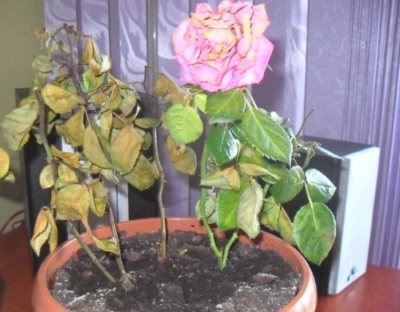

The most common reasons for the death of indoor roses include:
- lack of moisture (it is perceived especially painfully with a lack of trace elements and humus in the soil);
- high content of lime in the soil;
- excess moisture in the soil (often due to improper drainage or lack of it);
- lack of sunlight;
- diseases (such as cancer or rust);
- pests (for example, insect larvae).
Improper nutrition
Lack or overabundance of nutrients is often the reason that leaves dry on roses in the garden. The plant needs constant feeding. But it must be carried out very carefully, so as not to harm the bush even more.
The main substances that the plant needs
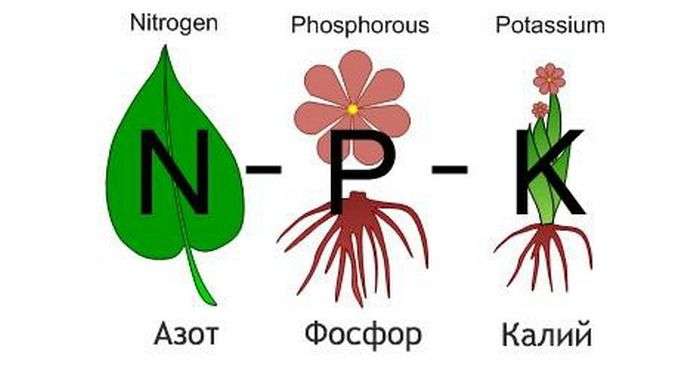

It is worth remembering that yellowed and dried leaves are just the first sign of some kind of lack of care. Neglect of such a reaction of the plant can lead to its complete death.
When is it natural and when is it not?
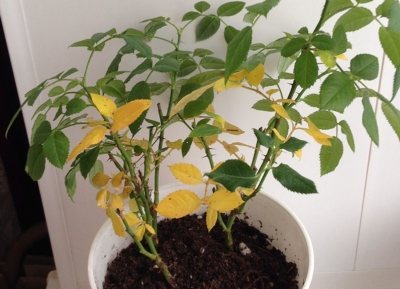

If in the fall or after the end of the vegetative period, the leaves and faded buds of a room rose gradually dry up and fall off, then there is no reason for panic - this is a natural physiological process. This process is necessary for the rose to renew itself and enter the resting stage.
An unnatural fall is considered:
- Loss of leaves in the spring and summer.
- Yellowing and falling leaves on only one side of the flower.
- The appearance on the leaves of black spots, red veins, white bloom.
If such a situation arises, it is necessary to help the flower as soon as possible.
Diseases and pests
Various diseases and pests can undoubtedly lead to the fact that leaves on roses dry in the garden.
The following diseases can affect the condition of the bush:
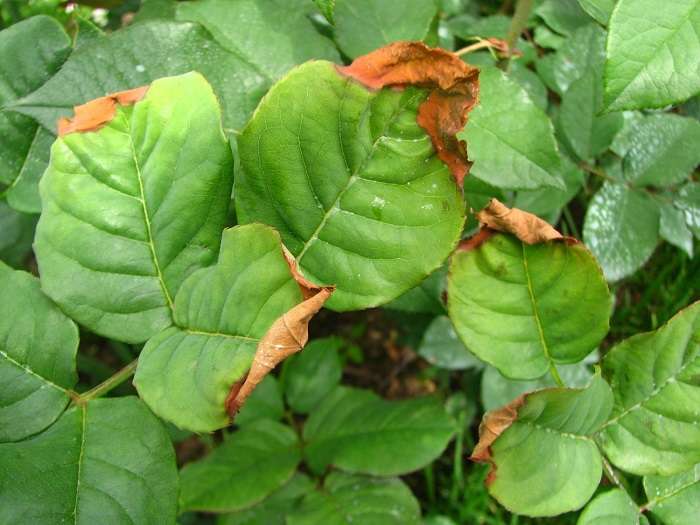

The cause of infection is often a new infected bush, and even untreated garden tools (yes, tools require sterility when working with plants!). In order to avoid diseases, it is necessary to carry out prevention. This is a mandatory spring treatment with special means of the plant and the soil around it.
New bushes can be soaked in a fungicide solution to avoid contamination with infections and fungi, if any.
Also, the leaves and young shoots of a rose can wither if pests are introduced.
Pests
- Rose leafhopper. Small yellow insects. They are often the reason why roses do not wither without blooming.
- Spider mite. They can be seen on the inside of the leaf in the form of white balls. They also leave small cobwebs in the buds and on the stem.
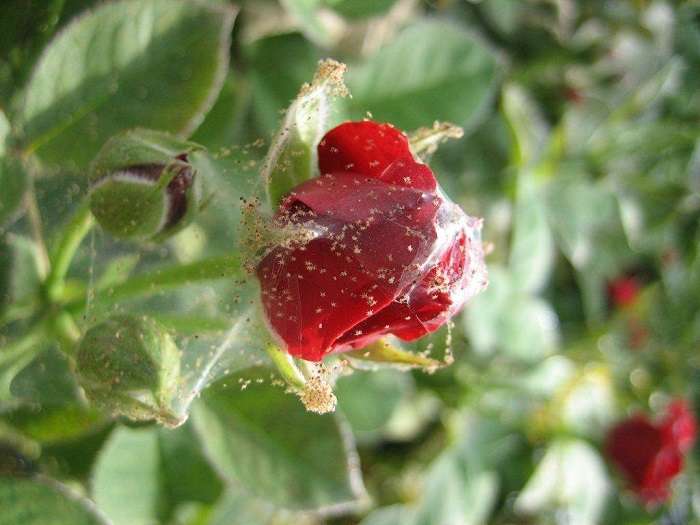

You can get rid of the above pests thanks to special insecticidal agents.
Remember that before deciding what to do with the plant, you need to understand why the leaves of the garden rose dry. After all, the wrong help can aggravate an existing problem.
Indoor roses are among the rather capricious plants that require more attention than their garden cousins, since the microclimate of city apartments is a greater test for them than the effects of weather conditions when grown outdoors. Another factor that influences the well-being of this delicate culture is the very limited space of the flower pot.
The most common problem that baffles inexperienced gardeners is the drying up of beautiful bushes, which only yesterday delighted with abundant flowering, and today they began to shed their leaves and are rapidly losing their decorative effect.
Why does indoor roses dry in a pot and can the death of a plant be prevented? The answer to these questions can be found in the following sections of our article.
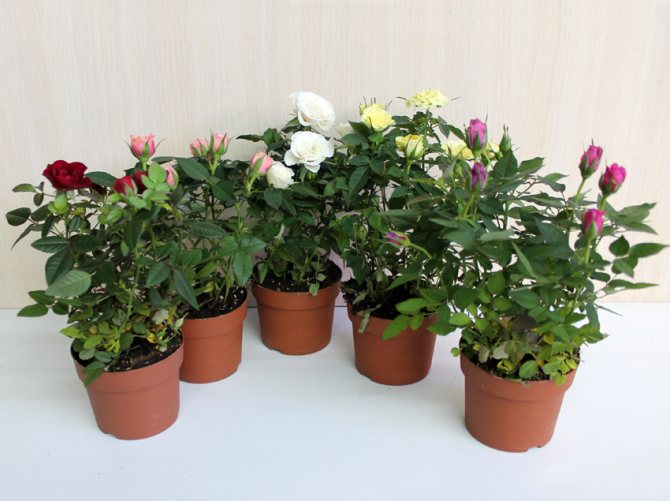

Dangerous pests
Aphids, thrips and spider mites are the most common pests of domestic plants, which often cause them to get sick and dry. It is not difficult to find them. Usually, both the insects themselves and traces of their activity are visible. The presence of parasites is indicated by gnawed areas of the leaves of a room rose and small dark spots on them. The presence of a tick will be revealed by a cobweb, which is usually found under the foliage. If such signs are found, it means that the flowers wither for this very reason.
All affected parts of the plant are carefully removed. Then treatment is carried out with special solutions against insects.It is recommended to do this as a preventive measure in the summer, even if the pests are not visible.


Why do roses in a pot dry up: reasons
The culprits for the poor health of potted roses, as a rule, are mistakes made when caring for them. To prevent the death of plants, in each case it is necessary to find out the cause of their ailment.


Indoor rose in a pot most often dries up due to:
- Low level of air humidity in the room.
- The close location of heating appliances.
- Improper organization of watering. Frequent watering or using too cold water can provoke root rot.
- Serious damage to the root system, preventing the supply of nutrients to the plant.
- Exposure to cold air (if the plant pot is in a draft).
- Acute lack of trace elements and nutrients in the substrate (nitrogen, potassium, iron, etc.).
- Insect attacks.
- The high density of the soil in the pot, which prevents the normal flow of oxygen to the roots.
- Lack of lighting.
- Too frequent spraying (some varieties of roses react to this by yellowing and falling leaves).
Intensive leaf fall is also observed during the period when the plant begins to prepare for wintering.
How to cure a rose
Fading flowers can be saved in most cases.
How to revive a withering rose due to care errors:
- 1 Move to a bright place away from batteries, heaters, etc.
- 2 Observe the temperature regime.
- 3 Ventilate the room, avoiding drafts.
- 4 Water as soon as the soil in the pot is slightly dry.
- 5Regularly irrigate the bush.
- 6 Use water for irrigation and spraying that has been kept to room temperature and purified from impurities through a filter.
The rose bush withers from too much watering. In this case, you should only do with spraying. If the soil in the pot is heavily flooded, then it would be better to transplant the plant. Humidification through the drip tray will help avoid these problems. The rose will absorb the necessary portion of water, after which the excess should be drained.
The high moisture content of the soil not only does not allow the flower to absorb nutrients better, but also causes fungal diseases. The presence of such will be indicated by extraneous growths on the stems and leaves, plaques, darkened areas, plaque, powdery mildew. This requires treatment with antifungal agents. Fitosporin works well.
What to do if a rose in a pot dries up?
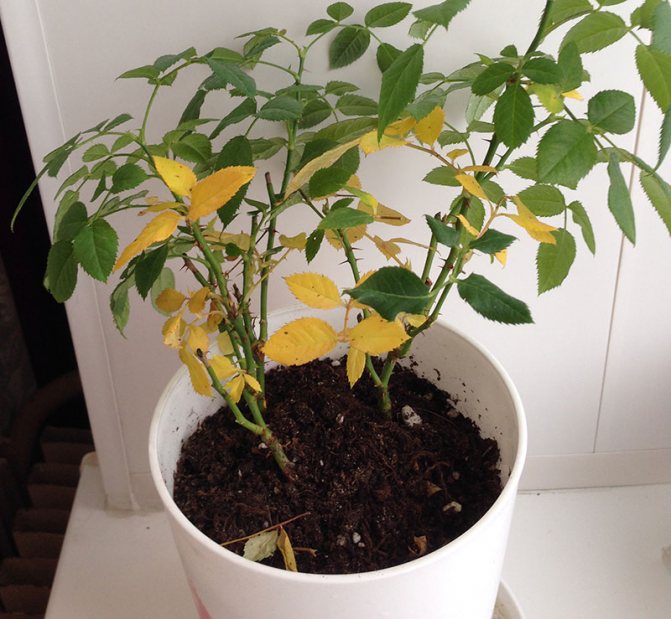

- If a profusely flowering bush, recently brought from a store or received as a present, suddenly began to drop its leaves, do not panic, feverishly rearranging it from place to place or increasing watering. In a similar way, the plant is most likely simply responding to new conditions of detention. A pot with a freshly purchased room rose must be placed in a well-lit, warm place that excludes the occurrence of drafts. The best option for its placement is the sill of the southeast or east window. After the rose gets used to the new environment, the leaves will stop falling.
- It is much worse if the wilting of flowers and unopened buds is observed, and the leaves not only fall off, but also turn black. This symptomatology is typical for plants exposed to freezing, fungal infection or attack by insect pests. That is why the pot with the newly purchased rose should not be placed on the same windowsill with other indoor plants. It is better to keep the flower separately for two weeks, carefully monitoring its condition.
- Homemade rose dries in an overly hot room.You can cope with this problem by placing the flower pot in a pallet filled with wet expanded clay or removing it away from the central heating battery, while not forgetting to control the degree of soil moisture in the pot. If it turns out to be insufficient, the flower must be watered, and then the leaves must be sprayed with a spray bottle.
- Very often, indoor roses dry out due to decay of the root system, provoked either by too frequent watering, which led to waterlogging of the soil, or by the presence of an excessively dense substrate that does not have time to dry out after the next watering. What to do in this case? Having freed the roots from the old soil, the rotten areas (they will be soft, black-transparent) must be removed, and the healthy ones should be washed in a weak solution of potassium permanganate. After that, the root system is kept in a solution of the fungicidal preparation "Fitosporin-M" for half an hour. Taking a bush from a container with a solution, the roots are dried in air for two hours, and then transplanted into another pot filled with fresh, fertile and loose soil. The transplanted rose is not watered, but only sprayed once a day. Ten days later, the plant is watered with a solution of the same fungicide.
- If the root system of a room rose is irretrievably damaged, you can cut several cuttings from the bush and try to use them for further propagation of the plant.
- If the leaves of indoor roses have begun to turn yellow, you need to check the soil in the pot: it may be waterlogged. In this case, you should refrain from watering for a while, limiting yourself to spraying the leaves. If there are signs of soil acidification, the rose is transplanted using a specialized substrate purchased at a flower shop (it is better to refuse to use garden soil). A yellowing rose can be fed with a complex fertilizer (Bona Forte and Greenwold give good results).
- Evidence that the rose dies as a result of an attack of parasites (thrips, spider mites or aphids) is the appearance of cobwebs, eaten or speckled with dark dots on the leaves, as well as the appearance of insects that are well amenable to visual observation. It is possible to cope with pests with the help of insecticidal preparations "Actellik" or "Fitoverm" (several treatments will be required with a seven-day break).
- There is an easy way to get rid of a spider mite from an indoor rose. Thoroughly lathering the sponge with a bar of laundry soap, the resulting foam is generously applied to the stems, leaves and soil surface. After half an hour, the foam is carefully washed off with running warm water from the shower head.
- If home roses wither as a result of aphid infestation, you can resort to the help of an infusion made from orange peels, drenched in boiling water and infused for 48 hours. After spraying the leaves of the affected plants with undiluted infusion, they are covered with cellophane film and left for the whole night. In the morning, the film is removed. New leaves on the bushes appear, as a rule, by the end of the second day. To prevent the appearance of new parasites, the treatment can be repeated.
- Clarification of the leaves of indoor roses can be the result of chlorosis. You can cope with the disease by feeding them with a mineral fertilizer containing a full set of trace elements.
- What to do if the indoor rose has dried out as a result of damage to the root system? You can resort to the help of stimulants of root formation, represented by the drugs "Heteroauxin" or "Kornevin". The roots of the plant, removed from the pot and freed from the soil, are placed in a container with a freshly prepared solution for 6-8 hours. After this time, it is transplanted into another pot using a light fresh substrate.
- If the newly purchased indoor rose sheds its leaves too intensively, you can, by shortening the branches by 5-6 cm, pour it with a solution of a growth stimulator (it is best to take "Epin").This manipulation will help the plant cope with stress faster. To prevent the occurrence of chlorosis, after 15-20 days, the same plant must be watered with a solution of Ferovit. Every 15 days it will be necessary to water it with water acidified with lemon juice (3-4 drops of juice per 100 ml of water).
- If, despite the whole complex of measures taken, the wilting of the leaves continues, and the green shoots dry up, becoming shriveled and brown, the soil in the pot can be watered abundantly. The aboveground part of the bush must be immersed in a bowl of cool water and left in it for two hours. You can do it easier by placing a pot with a wilting rose in a basin of water. The liquid will enter the soil through the drainage holes at the bottom of the pot.
How is resuscitation different from conventional treatment?
Resuscitation is a set of measures required to restore the normal state of a flower. Unlike long term treatments, resuscitation requires immediate and short term action to keep the plant alive.
There is a threat to plant life if:
- wilting and falling of leaves;
- lack of fresh shoots;
- non-opening of buds;
- drying of the stem;
- blackening of flowers;
- the appearance of mold or parasites.
What to do with a rose after purchase?
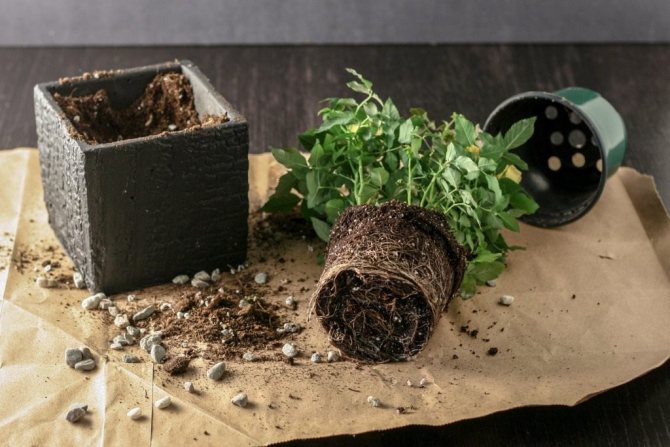

Indoor roses in pots need special care from the first days of purchase, since in the store their ideal appearance is maintained with the help of special fertilizers and dressings, and the cellophane packaging maintains the required level of ambient humidity. Once at home, such plants begin to wilt, shedding leaves and unblown buds, quickly losing their former attractiveness.
To prevent this from happening, the owner of the newly purchased plant needs:
- Free it from cellophane packaging, which in room conditions will impede normal air circulation, provoking the development of bacterial and fungal infections.
- Remove all dry stems and leaves with sharp scissors. Leaf blades with dried tips and all kinds of spots are also subject to removal.
- Cut off all flowers and buds from the bush. Otherwise, the plant will spend on their blooming the remnants of the forces necessary for the formation of the root system and adaptation to new conditions of detention.
- Treat the plant with solutions of insecticidal and fungicidal preparations (Fitoverm and Fitosporin).
- Transplant it (in case the flower grows in a too cramped pot or in one flowerpot - to give it more splendor - several bushes were planted at once). From a rose removed from a pot, rotted areas of the root system, as well as old roots, painted brown or black, are removed. Then it is transplanted into a new pot, the diameter of which is 3-4 cm larger and 6-7 cm higher than the previous one.
- At the bottom of the pot, it is necessary to pour a layer of expanded clay, the thickness of which should be at least a centimeter. In a pot without a drain hole, the thickness of the drain must be tripled.
The soil for a room rose can be prepared on your own by taking compost, river sand, soil from under coniferous trees, leaf humus (one part at a time) and three parts of sod land.
Having filled up the prepared substrate on top of the drainage, place the rose in a new pot and, firmly fixing the flower, pour it with warm water. It is recommended to spray a newly transplanted bush with a solution of the Epin preparation.
What if the house plant sheds its leaves?
There are several reasons why this whimsical plant sheds leaves and dries up:
- Physiological aging - when a flower at the final stage of its life begins to throw off leaves and buds.
- Seasonality - when in the fall the indoor flower sheds its leaves so that new ones will grow in the spring.
- Violation of the light regime - lack or excess of sunlight.
- Changes in the weather or changes in the microclimate at home - changes in the air temperature and humidity level in the room, the appearance of a draft or the start of operation of heating devices in the house affect the state of the rose.
- Violation of the irrigation regime - lack or excess of moisture in the soil.
- The presence of pests - parasites dangerous for flowers, especially spider mites, can destroy the plant in a matter of days.
- Unsuitable soil - lack or excess of nutrients in the soil, lead to the fact that the flower begins to ache and wither.
- The defeat of the rose by pathogenic microflora - the flower begins to rot or black spots appear on it.
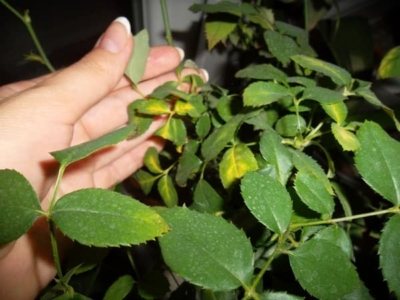

If the leaves have begun to fall off the rose, it is recommended:
- Closely examine the flower... If the leaves turn yellow and fall off on one side, then this may indicate an excess of sunlight. In such a situation, it is necessary to provide the rose with diffused light.
- Check the potting soil... If there is cracked dry soil in the pot, then you need to start watering regularly. For irrigation, use pre-settled water at room temperature.
- Remember when the rose ground was last changed... If more than a year ago, then it is advisable to urgently start feeding the plant. But it is worth carefully studying the instructions to strictly follow it, so as not to overfeed.
- Check leaves and stems... If pests have been detected, it is recommended not to delay the initiation of treatment. In this case, it is necessary:
- Isolate the rose from other plants.
- Cut off all affected areas with a sterile blade.
- Treat with a parasite remedy according to the instructions.
If a rose in the spring or summer threw off all the leaves in the shortest possible time, then this suggests that:
- The flower is in a room with very dry air.What to do in a situation if the plant has dropped all the leaves:
- Move it to another room or install a humidifier nearby.
- Water the flower regularly and prevent the soil from drying out.
- The flower was infected with a dangerous disease. In this situation, the action plan is as follows:
- Trim off all affected areas of the flower and the remaining buds with a sterile blade.
- Treat the plant with special products.
A rose that has dropped all the leaves will take a long time to recover, so it is recommended to be patient and wait, while observing the regime of light and watering.
How to properly care for a flower to prevent drying out
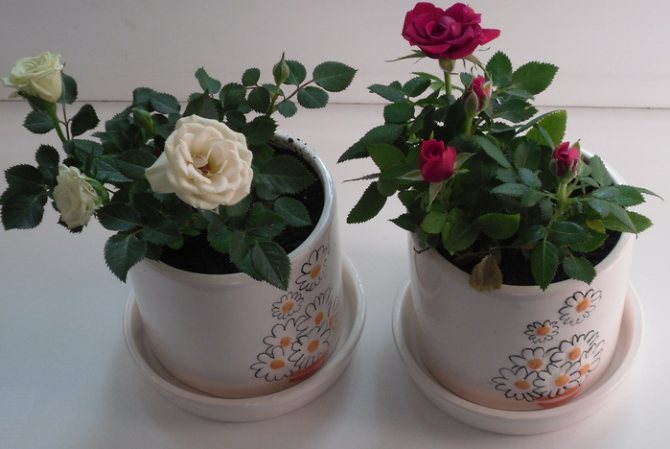

To prevent the indoor rose from drying out, it is necessary to provide it with proper care.
- Indoor rose is one of the light-loving plants, so the best place to place it is the sill of a south-facing window.
- In the absence of such an opportunity, she will have to provide additional illumination with the help of a phytolamp.
- The room temperature should be maintained at 18-25 degrees.
- To ensure full development in the warm season, it is advisable to take the pot with the plant out into the fresh air (in a secluded corner of the garden or on the balcony).
- The room where there is a pot with a rose must be regularly ventilated, in every possible way avoiding the occurrence of drafts.
- To water a room rose, you must use tap water at room temperature, standing for 24 hours. Knowing that the flower does not like lime, some growers water it with boiled water.
- A plant that does not tolerate dry air must be sprayed daily, if possible, doing this in the evening hours.
- You can revive a capricious plant with the help of regular (at least twice a month) fertilizing with complex mineral fertilizers.
- Experienced flower growers recommend using liquid complex fertilizer "Bona Forte" for feeding home roses, once a week watering the flower with a solution of this preparation, and the next - using the same solution for spraying the leaves. Throughout the growing season, such watering and spraying must be alternated.
- Once a week, it is necessary to treat the roses with a solution of Fitoverm insecticide.
- To form a beautiful bush, the plant needs periodic pruning, consisting in the removal of dry inflorescences and twigs, as well as shoots that have grown over the winter and violate the correct shape of the crown. They are best done during the spring months.
Preventing the recurrence of the problem
Almost all diseases of rose bushes are difficult to treat., therefore, it is recommended to take preventive measures in advance to reduce the likelihood of problems:


Thus, there are many reasons for the falling leaves and buds of a room rose, and they are all associated with making mistakes in care. Timely identification of the causes and their elimination will help save and restore the plant. In order to avoid such problems in the future, it is important to observe preventive measures.
If you find an error, please select a piece of text and press Ctrl + Enter.


- Home rose - what to do if leaves wither or fly around
- Why do dracaena leaves dry
- How to revive frozen flowers
A freshly brought indoor rose from the store should get used to the new climate for it. The first thing to do is to place it in a warm, draft-free, well-lit place. At first, a rose in a pot may shed its leaves. Do not panic, do not move the pot from place to place, do not increase watering. This is a completely normal reaction to a situation unusual for a rose. Give her time to get used to it.
A more alarming symptom is when flowers and unopened buds wither, and the leaves not only crumble, but also turn black. It is quite possible that you got a frozen specimen. If these signs are present, the rose can also be affected by pests or disease. Therefore, it is better to keep the newly purchased plant at a distance from other green pets - about 2 weeks. During this time, carefully monitor the condition of the plant.
A spider mite can cause the leaves to wilt - often inspect the area under the leaves of the plant. It is there that he starts first of all. The sooner you find traces of a tick, cobwebs, the more time you will have to take action. It is better to tear off leaves affected by a tick. You can spray with a chemical to get rid of the harmful parasite - for a choice, it is better to contact the flower shop where the plant was purchased.
It is better to cut off all the buds and leaves of a plant that has just been brought into the house, so that the rose does not waste energy on them during the acclimatization period. Or wait until the end of flowering and cut the plant so that only young shoots 10 cm long from the root remain.
If, in your opinion, everything that is possible has been done for the safe growth of a room rose, but the leaves still continue to fade, and the shoots from the green ones turn brown and wrinkled, do so. Water the soil abundantly, then dip the entire bush in water for a couple of hours. This is done with cut roses. You can put water in a basin and just put a rose in a pot in it. Moisture will enter the earthball through the holes in the bottom of the pot.
Indoor roses are among the rather capricious plants that require more attention than their garden cousins, since the microclimate of city apartments is a greater test for them than the effects of weather conditions when grown outdoors. Another factor that influences the well-being of this delicate culture is the very limited space of the flower pot.
The most common problem that baffles inexperienced gardeners is the drying up of beautiful bushes, which only yesterday delighted with abundant flowering, and today they began to shed their leaves and are rapidly losing their decorative effect.
Why does indoor roses dry in a pot and can the death of a plant be prevented? The answer to these questions can be found in the following sections of our article.
Probable reasons why the tips of the leaves in indoor plants can dry out
By the appearance of a plant, it is easy to understand what state it is in. By any changes on the pieces of paper, you can understand what he is missing. If the leaves of home flowers began to dry, then first you need to find out the reasons for this change:
- Very low room humidity. In this case, the leaf blades begin to dry out from the tips.
- Irrigation water contains a lot of chlorine or is too dirty.
- Wrong watering schedule.
- A certain plant variety falls into a dormant state. This usually happens in January.
- The soil in the container is constantly waterlogged.
- An excess or lack of minerals in the soil.
- Sunburn. It appears as brown spots on the leaf blades.
- The room temperature is too high or too low.
- Cramped pot. This can be understood by the creeping roots from it.
- Fungal or viral diseases.
- Insect pests both at the top and in the roots.
If possible, inspect the root system as well, as they can be infected with root rot or parasites. And the percentage of soil moisture will help determine a special indicator, which can be purchased at any gardening store.
Only after you correctly determine the cause, you can try to save indoor flowers from complete death.
The most common problem is dry air. And as soon as there is a problem with the tips of the leaves, the suspicion immediately falls on insufficient moisture. But you do not need to immediately rush to the store for a humidifier, because there may be more than one cause of the problem. It may be, on the contrary, in waterlogging of the soil and rotting of the root system, you can only worsen the situation.
In addition to dry air, drying of the tips of the leaves can lead to:
- 1 Watering with tap water. If poor-quality and, moreover, not yet settled water is used for irrigation, dried tips can be the result of chemical burns.
- 2 Incorrectly debugged plant watering regime.
- 3 Incorrect fertilization system.
- 4 Too bright lighting, direct sunlight on the plant. Burns in a similar situation can appear even in light-loving flowers, not to mention those that prefer shading.
- 5 Increased air temperature, especially in winter.
- 6 Too cramped flowerpot and, as a result, complete filling of the free soil with the root system of the plant.
Related article: Deformation of plant leaves, how to treat
To pinpoint exactly what caused the dry ends, it is necessary to approach the definition of the problem by the method of elimination. Follow this sequence of actions:
- 1 First, inspect the plant for pests. Pay special attention to the young shoots and the undersides of the leaves.
- 2 Check if the pot is too tight for the flower. To do this, pay attention to the drainage hole - if the roots stick out from there, then the plant should definitely be transplanted into a larger container.
- 3 Determine the moisture content of the soil. In flower shops special moisture indicators are sold, but you can do it easier. Use a regular wooden stick to poke the ground down to the bottom of the pot. If, after such a manipulation, the stick remains dirty and wet, then watering should not be done, the earth is sufficiently moistened. If the wet soil does not stick to the stick, then the plant must be watered.At the same time, remember that different crops have different attitudes towards the irrigation system.
- 4 Check if you are feeding the plant too often. The instructions for using the fertilizer can always be found on the package with it. Too frequent feeding of non-flowering crops can cause significant disturbances in their development. The initial stage of this destructive process for the plant manifests itself precisely in the dried tips. The lack of minerals can manifest itself in the same way, so an individual approach to each plant is important.
- 5 Think about whether you water the flowers with good water? Perhaps it was the tap water that caused the tips of the leaves to begin to dry out. A mixture of different chemicals, such as chlorine and fluoride, has a very negative effect on the condition of the soil.
- 6 Last but not least, think about the condition of the air, whether it is humid enough and comfortable for plants.
Deviation in two or more items on this list indicates an integrated approach to solving the problem.
As soon as the owner of the indoor mini-garden notices the yellowness and dryness at the ends of the leaf plates, he first of all begins to think about the level of humidity. Indeed, very often additional humidification of the environment and maintaining the correct microclimate can solve the problem.
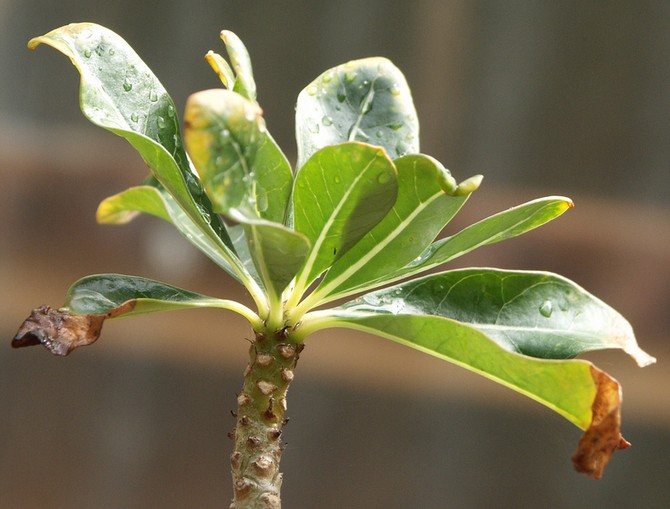

Causes of dry leaf tips include:
- dry air;
- insufficiently soft water;
- watering not on schedule, leading to excessive drying out or moisture of the soil;
- the influence of pests or diseases that indoor plants and flowers may be exposed to;
- lack of substances in the soil necessary for healthy growth or their excess;
- changing the conditions in which the plant is contained;
- too much illumination, which is especially true for shade-loving colors;
- lack of free space in the pot due to overgrown roots;
- wrong temperature regime;
- other factors.
When examining a plant, it is recommended to move from a more complex factor, such as a disease, to a simple one, for example, excessively dry air. This will allow not to miss a single possible reason for the appearance of dryness and yellowness on the leaf plates.
In what order is it better to inspect the flower:
- Check the shoots and the inside of the foliage for signs of disease or pests.
- Examine the ground and the pot containing the plant. Is there enough room for the roots, or have they taken up almost all of the space and make their way through the lower drainage hole.
- How well the soil dries out between waterings, does it dry out during these time intervals. This can be determined either by touching the soil, or with the help of special indicators that can be bought in many flower shops.
- To what extent is the plant feeding rate observed? For some species, it is required quite often, while for others, excess nutrients will only cause poor growth and development, which will manifest itself through drying out leaves.
- Is the water used for irrigation suitable for the plant? Often, the owners of indoor plants water them with ordinary tap water. In most cases, its composition adversely affects the condition of the soil and leads to a disruption in the nutrition of indoor plants. You can defend the water so that all heavy substances settle in a specially designated container, or use special filters that can soften it.
- Humidity is the most common cause of drying out of the leaves of indoor plants. To avoid this, you need to regularly check how dry the air is in the room where the flowers are located. This is especially true for moisture-loving species.
If it was possible to identify only one problem, it is highly likely that with its elimination, the plant ailment will go away.In the case when there are 2 or more possible reasons for the appearance of disturbances in the growth and development of flowers, it will be necessary to work on eliminating all factors.
How to save dried rose seedlings
If a seedling looks dehydrated, it is still alive. Even a branch whose wood has changed color from white to gray-brown retains dormant buds at the very root collar. If the skin of the stem is green, the thorns are pinkish, and the buds are simply dried up, this plant is still quite viable. For their resuscitation, there are effective, albeit harsh in relation to the plant, methods.
Rose treatment with nutritious mixtures (gentle)
- First of all, the bush should be bathed well - for a day or two, place a rose seedling in a container with water. It is better to take snow instead of chlorinated tap water. It is useful to add honey to the container - a tablespoon per bucket.
- After 24-48 hours, the rose is placed in the “intensive care unit”. A soil mixture should be prepared as a supporting substrate for the initial planting: horse (brown) peat - 1 part by weight, deciduous soil - 2 parts by weight or purchased soil for growing roses.
- The components are mixed and diluted with water until creamy. To enhance the effective ability, an Epin or Energen tablet is added to the solution. Kornevin will do too.
- The upper part of the rose seedlings is cut off as much as possible: they leave two or even one bud. The roots are cut off gradually - literally 1 cm each, the most hopeless part is removed in order to gently get to the living tissue.
- Plants are "planted" in a creamy nutritious substrate. The healing process is monitored daily, if necessary, the nutrient mixture in the container is replenished.
- Final healing should come within a calendar month, although in fact the seedling begins to show signs of life much earlier. With a favorable outcome, the rose is sent for rehabilitation - it is planted in a pot, which is placed on the window.
Intensive care for seedlings
This method of resuscitation of roses is similar to the previous one. The plant is also removed from the dried parts of the stem and root, and then soaked in a life-giving bath.
- For an intensive treatment course, a mixture with biostimulants is taken as a bath filler. A Heteroauxin tablet, an Epin package, or peat oxidate will do. Water procedures are carried out in full shade - ultraviolet light weakens the effect of drugs.
- Good results are obtained when the seedlings are placed in a substance of 10 liters of water, 15 g of carbamide, 15 g of superphosphate and a couple of drops of Heteroauxin or Kornevin.
After the end of water procedures (after 24 hours), the rose is planted in a pot and placed in a warm, bright place. If the weather permits, the seedling is determined for permanent residence in the garden. The sprout is covered with an inverted 5-liter baklag with the neck cut off from above. The soil around is regularly watered and loosened. Foliar dressing with Epin is carried out, Kornevin is introduced into the ground, following the manufacturer's recommendations.
In all water operations, measures must be taken to prevent tissue decay. It has been found that the best method of preventing rotting is to aerate the solutions, for which a conventional aquarium compressor can be used. If there is no aquarium fixture, you should at least systematically stir the solution.
Shock therapy - for roses that look hopeless
Let's say you double-checked the effectiveness of all the recommendations, and the rose stubbornly refuses to show signs of life. There remains one more method - similar to a Russian bath or a Finnish sauna.
After the end of a 1-2-day soaking procedure with Energen or Kornevin, a container with seedlings is placed in a bath, covered with a thick cloth or an old baby blanket and poured over with water heated to a temperature of 70-80 ° C. Quickly, to keep warm, a plastic container is put on top of the container. package. After a couple of hours, the procedure is repeated.The bath cycle lasts 2-3 days, and then the plant is planted in a mini-greenhouse under a jar.
Shock therapy is a last resort. If its effectiveness is at zero, you can try a local effect with potent agents.
Epin injections
The dried stem is rubbed along the entire length with concentrated Epin. A compress from a cloth moistened with Epin is applied to the root collar, this place is covered with cellophane on top, and tied.
According to experienced florists, the method is effective and very reliable. But, at the same time, this is the last method of resuscitation.
Useful video
We offer you to watch an informative video about the resuscitation of a home rose:
If you find an error, please select a piece of text and press Ctrl + Enter.


Poets of all ages sing about her. There is nothing in the world more tender and more beautiful, Than this bundle of scarlet petals, Opened with a fragrant cup ...
I begin this article with an excerpt from S. Marshak's poem because it is about a flower that is admired by everyone without exception. Queen of all colors. A symbol of perfection ... Admirers of its beauty do not award the rose with any epithets.
Not surprisingly, many home plant lovers dream of enjoying the bloom and scent of this natural wonder all year round. However, growing a rose at home is not easy. Caring for her is significantly different from caring for other indoor plants. And if you decided on this experience for the first time, then - here is the first pitfall ...
Care errors
Symptoms The rosette dries up, sheds its leaves, the buds wither, the ends of the shoots turn brown, dry up.
Cause. Insufficient watering, low air humidity.
Treatment. Cut off all dried branches to a height of 3-4 cm from the main trunk, as well as all dry branches and yellowed leaves. Water the rose, place the pot under a plastic bag to ensure high humidity under the shelter. When new shoots appear, start airing the greenhouse, accustom the rose to dry air. If the rose has wilted but hasn't shed its leaves, try dipping the entire pot in water for 5 minutes and spraying the plant, or even soaking it whole for 2 hours in a bath, wrapping the pot in a plastic bag. If symptoms appear in the fall, don't worry - the rose is preparing for winter.
Symptoms The rosette dries up, sheds its leaves, the buds wither, the shoots turn brown, rot.
Cause. Too much watering, frequent spraying in a cold room.
Treatment. It is more difficult to reanimate a rose that has been "filled" than "underfilled". It is necessary to remove it from the pot, clear the roots from the earth and inspect - if not all are rotten, the damaged ones are cut and transplanted into new soil (the old one may be sour), watered moderately, but not allowing the coma to completely dry out.
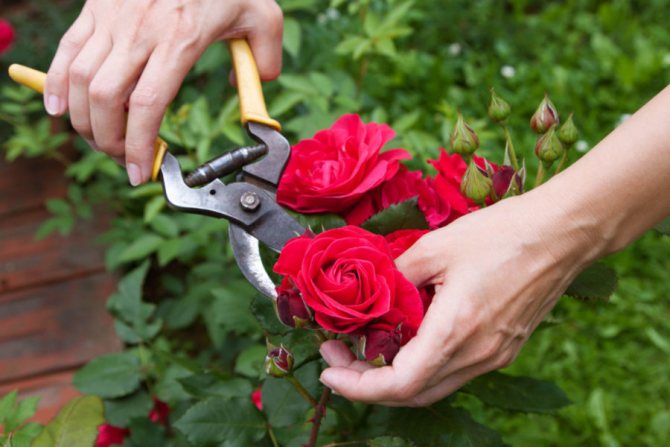

What kind of care is needed at home?
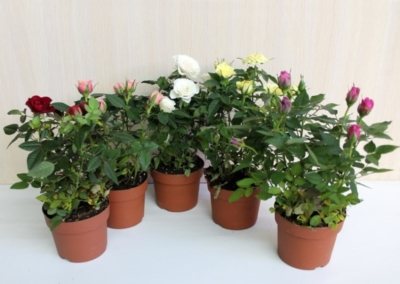

What to do after buying a flower in a pot? Start caring for the rose immediately after purchase.... Having freed from the packaging film, carefully examine it. Cut off dry twigs and blackened shoots. Experienced growers also advise to get rid of buds and flowers, since stimulated flowering greatly weakens the rose.
Even if no pests are found, the plant must be washed under a warm shower. This should be done to prevent spider mites. Treatment with an antifungal drug (Fitosporin) will not be superfluous.
Read also: Firewood holder for fireplace
Where to put?
Indoor roses are light-requiring and it is desirable to place them on the southern and southeastern windows.while avoiding direct sunlight on the flowers. Ideally - light from 16 to 18 hours a day. If there is insufficient lighting due to housing or climatic conditions, fluorescent lamps can be used. It will be good for the flowers on the balcony in the summer. You can take them in pots to their summer cottage and place them in a flower garden, in a shaded place.
So, in the summer, the rose is actively developing, it must be watered regularly, fed, sprayed in a timely manner.In autumn, when the air temperature drops, the growth rate of the rose decreases. Therefore, plant feeding is stopped, and watering is reduced.
In winter, for the one that has delighted you with its flowering for so long, it is time to rest. It's time to correct her height. Each branch is trimmed with a sharp knife, no more than five buds remain on each branch. Now the flower can be removed to a darker and cooler place, about 10 ° C. In the spring, a rested rose will have fresh leaves and it will start growing again.
Is it enough to just start watering abundantly?
- You need to water the flower as the soil dries, as soon as it becomes dry, it should be moistened.
- The water should be at room temperature. It must be defended for at least a day.
- A rose planted in open ground should be watered once every two weeks, while taking into account the rainfall and their abundance. At least 2 buckets of water are needed per square meter, if the bush is large enough, then the volume can be increased to 4 buckets.
If the plant has dried up, then you do not need to immediately start watering it abundantly. This measure can lead to decay of the root system. The best option would be to restore the irrigation system.
It is also worth finding out the real reason for the drying of the plant, it can be both diseases and pests, and improper consecration. Also, the reason may be the lack of regular feeding and mineral fertilization.
If you do not take into account additional factors, then you can quickly destroy the plant, both growing on the street and at home.
Prevention measures
Preventive measures are very important. They help reduce the risk of various chlorophytum diseases. Lovers of indoor plants who are going to replenish their collection with this plant or have it in it are advised to pay special attention to preventive measures.
- For a plant to grow well, it needs good soil. You should choose the right soil for this particular flower. It is better when buying soil to give preference to a substrate that has neutral acidity. A substrate should be chosen that is perfectly permeable to water and air.
- To reduce the risk of the appearance of various parasites in the substrate, it is recommended to process it before using it for planting or transplanting a plant. So, the soil can be calcined or processed in a water bath (depending on the type of soil substrate).
- An important preventive measure is compliance with all microclimate indicators. It is better to place the plant in a well-lit place, as well as monitor the optimal temperature and humidity in the room. If for some reason the air in the room where the flower "lives" decreases, then it is recommended to think about the possibility of purchasing special household appliances for humidifying the air - humidifiers. The presence of such a device in a house where the air humidity is reduced is a necessity, not a luxury.
- To keep the leaves and roots of the plant in good condition, do not forget about regular watering. It is better to water the flower with water that has been previously settled.
- Do not forget about the transplant. Experts recommend carrying out such a procedure only when needed. Some (especially beginners) indoor plant lovers abuse the transplant. This often leads to the fact that later the flowers begin to grow poorly due to damage to the root system. In order not to damage the plant, it should be transplanted correctly - in compliance with special technology.
- Another important preventive measure is regular plant inspections. To do this, you need to inspect the leaves. Pay attention to such a "home examination" should be on the color and elasticity of the foliage. And also when viewed, you can see pests and parasites on the leaves. If they were found, in this case, it is not worth delaying the treatment. Delayed therapy can lead to the death of the flower.
Why indoor rose dries
Indoor rose is a flower that is extremely sensitive to errors in care and the microclimate in the apartment. If it has dried out, the reason may be in two main factors - improper care or the development of parasites.
Improper care
The main mistakes when leaving:
Excessive watering does not allow obtaining minerals.
- Insufficient or excessive watering. With a moisture deficit, the plant does not receive minerals from the soil, dries up from dehydration. When there is too much water, the roots begin to rot and the plant soon dies.
- Too dry air in the room and proximity to heating devices. This causes dehydration and overheating of the plant.
- Cold or too hot air, drafts, or insufficient water used for irrigation.
- Damage to the roots during transplantation, improper care leads to the fact that the home rose dies.
- Lack of potassium, nitrogen, phosphorus.
- Too dense soil that interferes with aeration of the roots, i.e. supplying them with oxygen.
- Spraying too often.
- The lack of treatment of the plant with insecticides, due to which parasitic insects develop and the flower in the pot withers.
Dangerous pests
If the flowers, branches, leaves on a room rose wither and dry, become covered with spots of white or black, then it is possible that parasites have started. There are many pests - fungi (spot, powdery mildew, downy mildew), viruses, arthropods (mites, aphids, thrips) and insect larvae (caterpillars).
Spotting is a dark colored fungus that loves moisture and heat. This is a contagious disease that can be carried from soil or other indoor flowers. To prevent this, it is necessary to regularly ventilate the room, avoid high humidity and heat. In addition, timely pruning of branches is needed, because too thick foliage also contributes to the development of the disease.
Powdery mildew makes itself felt with a white bloom covering leaves, branches, buds, flowers. Its appearance is facilitated by an excess of mineral fertilizers, irregular airing, as well as a strong temperature drop, which weaken the flower's immunity.
Downy mildew loves dampness, appears in the form of purple spots on the inside of the leaves.


A dangerous pest for a rose is a spider mite that weaves a web between the leaves.
Viral infections can cause abnormal growths on the stems of the rose. The reason for the development is improper care and a decrease in the immunity of the plant.
Spider mites are a parasite that weaves a web between leaves and shoots. Its appearance is favored by excessively dry soil, the peak occurs in the autumn-winter period, when the heating season begins.
Insects can carry small parasites.
What is dropping and what does it look like?
Often, foliage that lacks chlorophyll falls off... The leaves become wilted, and eventually dry up completely. Rosebuds may also fall off.
Important! You need to know that shedding is both a natural process and caused by various diseases or improper plant maintenance.
The first sign is that the leaves have turned yellow. The appearance becomes unaesthetic, the indoor rose looks sick. Then the real leaf fall begins. Sometimes all the leaves fall completely.
Further care in winter and at other times of the year
Further care of the flower should include all parameters:
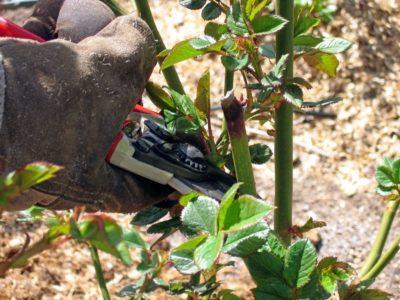

Lighting. The plant should not be allowed to be under direct, sunny hands. But at the same time, there must be a sufficient amount of light and heat, otherwise the plant may wither. You should be prudent when choosing a place for a flower.- Temperature. If the plant is at home, then drafts should be avoided. On the street, it is optimal to choose a place that is in the shade for part of the day, but at the same time is not cold.
- Watering. Water the plant with settled or filtered water as the soil dries out.In winter, watering intervals are reduced to a minimum due to the fact that the flower is in hibernation, otherwise decay of the root system may begin.
- Top dressing. In the warm season, you need to fertilize the plant once every two weeks, while it is worth alternating mineral fertilizer with organic fertilizer. In winter, fertilization should be kept to a minimum, as should watering.
- Pruning. The rose should be pruned regularly, garden bushes should be pruned before hibernation. Homemade after each flowering, so that dried buds do not take away the strength from a healthy plant.
Subject to the rules of caring for a room or street rose, it will delight the owner with its own flowering and healthy appearance. And careful attention to the flower will help to avoid drought and imminent death of the plant.
What to do to prevent the rose from dying after purchase and blooming? The basics of caring for a rose.
It is a mistake to think that a rose cannot be grown at home. This is a very grateful flower! It will sprout out newer shoots even worse than other plants! She will bloom like crazy in the summer and delight you with her buds! Friends will drop their jaw to the floor, they will exclaim "HOW did she survive after the purchase ?!" The main mistake of those who bought the rose, and from whom it DIED. The answer is simple - wrong adaptation. You just need to buy certain drugs and spray them and something else, then the rose WILL SURVIVE in 98% of cases. But first things first)


So, you are about to purchase a rose. How to choose a bush? What varieties of room roses are there?


More often, three types of roses are brought to shops like Auchan: mini mix (very small charming buds, cost approximately 100-150 rubles), cordana mix (medium buds, 200-300 r) and my favorite "patio" (from 400, large buds) , but there are still other subspecies.
It is better to buy a rose in spring! Do not even try to buy in winter and autumn - it will not survive 70% from a beginner, money is down the drain.
First Golden Rule. Choose a plant that looks strong and healthy. DO NOT take: with yellow leaves, with midges, with dry leaves, with a green bloom on the ground! It is important. Look for gnats on the inside of the sheets. Usually, roses that have just been brought to the store are absolutely healthy.
Second golden rule. you have chosen the color of the rose. And here you have a choice: take a bush where a bunch of buds have already blossomed or a bush that has many buds that have not yet opened: - take the second bush! Because such a bush has a lot of strength. And the other rose has already put its strength into the opening of the buds. Is it logical? All clear? Go ahead =)
Have you chosen a rose and are about to leave the store? But-but-but, not so fast. We turn around and go to the department of preparations for indoor plants.
Now, while we are reading this article, we take a sheet, a pen and write down what you buy from the drugs. (Do not replace drugs with similar ones! It is written epin, which means you are looking for only epin. As a rule, it is not difficult to find these drugs. They are in Auchan, in leroy merlin, in castoram.)
1) Epin (10 rubles) is a biostimulant. It will help the rosette to adapt and it will not die. A very good strong remedy. I will write more about it below.
2) Fitoverm (or mite). (10-15 rubles) Rose is very fond of such a reptile as a spider mite. A spider web may appear on a rose in spring-summer, there will be very small bugs, all the leaves will suddenly turn yellow, the rose dies. So, to avoid this, it is enough to carry out a very simple procedure: spray once a week with a solution of this very phytoverm. And there is no problem. Absolutely.
3) fertilizer for roses and chrysanthemums «bona forte"(This is the best fertilizer for roses. It costs 80-150 rubles .. if you can't afford it yet, buy another for roses. Just don't buy a miracle garden. Very bad. I've tried many fertilizers, but Bona Forte is the best).
4) pot for a rose with holes at the bottom (you will be replanting at home on the same day), buy a pot larger than the one in which the rose is sold.Should be 3 fingers wider.
5) now land: buy "soil for roses". It is important. Any firm. The cost is 45 rubles. Other land is not suitable.
6) and the last of the mandatory - drainage... These are brown pebbles that are placed on the bottom of the pot so that the water does not linger and the roots do not rot. (RUB 20)
From additional drugs you can take any remedy ("topaz" for example) from powdery mildew (this is a rose disease, when high humidity is observed in the air and the leaves are covered with a white bloom)
and further root you can take (10 p) (this is a biostimulant for the roots) It is used if a rose has to be saved at a markdown, and for rooting of cuttings of roses) well, this is when you already get sick with roses =) they know how to charm.
All these preparations will be enough for you for a very long time (I have a 3rd year already))) And you can use them for other plants.
So, check: epin, fitoverm (castor oil), bona forte fertilizer "for roses and chrysanthemums", a pot, soil for roses, drainage, any powdery mildew can also be used and roots.
You bought everything you need. They brought the rose (neatly) home. What to do with it next?
Read also: Useful properties of roasted sunflower seeds
Now you do everything clearly according to the instructions: you need to transplant the rose. In the same day.
1) Check if there are holes in the bottom of the pot. If not, do it yourself with scissors. Place drainage in a new pot. About 2 cm. Then pour a little soil for roses on the drainage.
2) you need to pull out the earthen lump, for this press on the sides of the pot in which the rose is. Tilt the pot 45 degrees, the lump with the plant will come out by itself)). Be careful with the roots - they are fragile. The lump is not divided into bushes. Don't do anything with it at all.
3) Place the lump with the plant in a new pot and cover the sides with new soil. There you already see if the lump is lower than the pot, you fall asleep a little from the bottom of the soil and on the sides. We direct the beauty, make sure that the bushes are in the center =)) Water well.
this is called “transhipment”.
4) now the most, most, most painful moment. It is imperative to cut all the buds. No matter how pitiful I explain why. Roses perceive the change of "place of residence" very painfully. If you do not cut the buds, she will use all her strength to open them, but we need her to use her strength. adaptation and root opening.
5) Dilute the epin according to the instructions and spray it well. It's a magical adaptation. You can leave the diluted solution and not pour it out. Useful for other plants after purchase) nothing will happen to it over time.
EVERYTHING! These were the most difficult moments for caring for a rose)) Then everything will be easier. I can congratulate you on your baptism of fire. Rose will survive! And it will give new shoots in a week or two 100%. Leaves may fall off after transplantation and turn yellow, but this is not scary. If she started up shoots, she took root.
Now do you understand why roses die after purchase? The adaptation is not correct. Neither epin, nor transplants into the correct drainage, the buds of course are not cut off - it's a pity. As a result, the rose cannot withstand the new atmosphere, dries up and dies.
And now the most pleasant and simple: how to care for a rose: P.s. The rose grows very quickly. before you have time to look back, it will grow many, many shoots and give buds, ideally in a month.
1) Never fertilize the scent in the first 2 weeks after purchase.
Then, fertilize Bona Forte once a week. Take a dose of the drug a little less than what is written in the instructions for the amount of water - the drug is strong. Water the rose with fertilizer for 1 week, spray the leaves with fertilizer for 2 weeks (see instructions). And so you alternate.
2) Watering as the soil dries up. I water it hard every 3-4 days. Gently dig the soil 1-2 cm apart. If even wet, do not water. Roses cannot stand either overflow or overdrying.
3) spray the miracle every day - she loves it! Does not tolerate dry air.If standing on a windowsill next to a radiator, place a jar of water next to it. Then water the rose with this water.
4) loves light, so the best place for her is a windowsill. But he does not like direct sunlight.
5) don't forget about fitoverm once a week!
Likes a shower with hot (so that the hand can endure) water =))
6) arrange wintering to rest .. if it is not possible, do not fertilize in winter.
She is very grateful .. How much you invest in her, she will give you so much.
By the way! If you are leaving for a week somewhere, water and put the pot (without a pallet) in a bowl of water. The rose will drink water through the roots. There will be some yellow leaves, but that's okay.
In a month and a half, it will give new buds)) In the summer, a flowering boom will begin)) Prepare cameras! Will delight you for years! And then you will get sick with this flower, as I did. because now you will know what to do after purchase and leaving .. you will want a different rose color, and then another one .. and then another variety.
p / s More photos I will find my roses - I will attach)
Possible problems
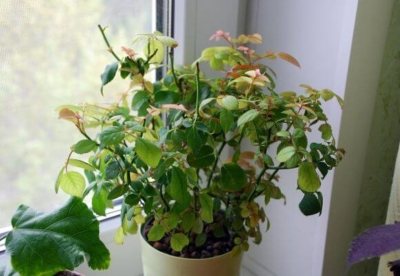

- Rose is a tasty morsel for many pests. Most often, spider mites annoy. The appearance of this parasite is signaled by dots on the leaves, like from a needle prick, a cobweb appears on the processes. The leaves turn yellow and fall off.
How to save a rose growing in a pot? For the tick, the most popular drug is Fitoverm, the plant is sprayed with its solution and the soil is soaked. The procedure is repeated 2-3 times with an interval of 7-10 days. This trouble appears due to a lack of moisture, so frequent bathing is good for prevention. Buds and young shoots suddenly began to deform, curl and dry out, take a closer look. Have you seen small insects? It's aphid. Do not hesitate, treat the sweet with soapy water. From chemistry - preparations containing Karbofos.
And here's another fun remedy: if there are few aphids, you can bring and plant several ladybirds on the bush, wishing them bon appetit. The leaves are covered with dark spots. They began to turn yellow and fall off. The rose has a fungal disease. This happens from excessive humidity. For example: under the packaging film in the store, when water gets on the leaves during watering (watering is necessary on the ground, not the whole plant).
Infected leaves should be removed and treated with fungicidal preparations. Fitosporin was mentioned above.
- Powdery mildew may appear if the plant has been exposed to extreme temperature changes (cold nights after warm days). Leaves and buds are sprinkled with white powder. Treatment: destroy damaged parts of the plant and again - fungicidal preparations.
- Leaves have yellow stripes or spots. It could be bacterial cancer. The roots and the lower part of the flower are rotting. The rose will have to be dug up and destroyed, since there are no chemical control agents. Do not use the contaminated ground again.
- The rose is sad: the buds wither, the leaves dry and fall off - all this may indicate care errors (why does a room rose discard leaves and buds and dry up?). If the shoots dry up - underfilled and dry air. We will reanimate urgently! It is necessary to remove dried branches up to 3-4 cm from the trunk. Water and place the rose pot in a tray filled with water. Or we build a greenhouse from a plastic bag.
It is worse if the branches of a sad rose do not dry out, but rot. This is an overflow. And salvation is a transplant into a new land with the removal of rotten roots.
Changing living conditions, cold and hard water for irrigation, overheating in summer, dry air in winter, spraying and watering in a cold room, cramped pot, uncleared wilted flowers ...Learn to "hear" and understand your rose... And she will certainly thank you!
... So in our house year after year goes, And in the house a beautiful rose grows. She is not a flower, but a wonderful child, She smiles even asleep, She is as good as all the roses in the garden, That just blooms every month of the year!
What will save the rose from pests?
Rose is treated with two types of drugs:
insecticides - against insects (fitoverm, actelik), fungicides - against fungal diseases (quadris, chorus, ridomil). There are also mixed preparations. Dosages are indicated in the instructions. For indoor conditions, fitoverm, for example, is more acceptable because it is less toxic. You can also use those preparations with which you usually process tomatoes in the country for late blight. But the dosage should be halved. Try to buy licensed drugs.
Video
Shop flower


There are many specially bred varieties that can bloom all year round.... They have a compact shape, various sizes, colors, doubleness and fullness of the bud, and often aroma. But ... most of the beautifully flowering purchased bushes are sold as a "live bouquet", which in indoor conditions will live for one or two months.
The point is that container growers are thinking about a good profit after the sale, not about the long life of the flower. Therefore, plants are often overfed with all kinds of chemistry, which greatly harms their immunity and oversaturated the soil with excess salts. They fit a few bushes in a small pot for splendor. And now, while they are still good and fresh, young beauties change the conditions of the store to, far from ideal for them, the conditions of apartments.
What to do
Foliage
- Light mode. If a flower has been moved from a dark place to a lighter one, it will get stress. It is necessary to gradually accustom the rose to the sun's rays. If, on the contrary, additional lighting is required at first.
- Revision of the irrigation regime. Watering is carried out as needed; complete drying of the soil should not be allowed. When water stagnates, root rot forms. To save the plant, it is taken out of the pot and the root system is gently washed. Rotten and dry roots are cut. Places of slices are processed by "Kornevin".
- It is worth paying attention to the top dressing produced. An excess of nitrogen and phosphorus fertilizers in the soil is harmful. Experienced growers know that nitrogen can cause a burn, from which foliage crumbles.
- Periodically, a room rose is examined for various diseases and pests. Chlorosis is a dangerous disease. The plant suffering from it loses all leaves and shoots, and then dies altogether.
Important! The only way to save the flower is to transplant it into new soil and feed it with a fertilizer containing iron. - Dark spots and cobwebs are a clear sign of a tick. It affects the leaf plate. It is recommended to treat the affected area with soapy water. If this procedure does not help, use chemicals:
DETAILS: Secrets of how to grow a rose from a bouquet
More often than not, the buds fall off for the same reasons as the leaves. All of the above instructions should be followed to avoid trouble. Formed weak buds indicate that the pot is small in volume. The capacity changes with the growth of the flower and its root system. The main reason for dumping buds is cramped containers.
Roses often drop buds. This may be due to the following reasons:
- Draft. If cold air gets on the plant while airing the room, this will lead to the buds falling off.
- Cold irrigation water. With the appearance of an indoor flower, you should learn how to water a rose and how to care for it. If these rules are not followed, she will not only shed the buds, but may also die. To prevent this from happening, the plant is watered with settled water at room temperature. Cold humidification should not be carried out.
- Incorrect transplant. A room rose is moved to another flowerpot at a time when there are no buds on it. If this is done at a different time, then even if the roots are slightly damaged, it will drop them.
- Low humidity level. In the presence of such an atmosphere, spraying is carried out.During the procedure, make sure that drops of water do not fall on the buds, otherwise they will fall off.
- Lack of food. When the soil is depleted, the buds wither. To prevent this from happening, the plant is watered with phosphorus-potassium complex fertilizers. Failure to comply with the dosage also leads to the fall of the buds.
- Lack of light. With a lack of light, the rose slows down photosynthesis, which leads to the fall of the flowers.
- Pests.
To save the plant, it is necessary to revise the conditions of detention, caring for it. It's worth starting with changing the light mode. If the rose was moved from a dark room to a more open place, then due to stress, it begins to shed foliage. To avoid this, the rose is gradually accustomed to sunlight. If you plan to move the pot to a darker place, then additional lighting will be organized on it.
Be sure to look at the watering regime. It should be carried out as needed, but the soil must not be allowed to completely dry out. When the water stagnates, the plant is affected by root rot. And how to reanimate roses in a pot if their roots are affected? To do this, the bushes are pulled out of the containers, the power system is washed. All dry, rotten roots are removed. Places of cuts must be treated with "Kornevin", sprinkled with activated carbon.
During feeding, you must carefully read the instructions. An excess of nitrogen, phosphorus fertilizers leads to burns, causing leaves to fall.
at each watering, the rose should be examined for the presence of pests and diseases. These include chlorosis, spider mites.
There is a significant difference between a street rose and a room rose, the basis of which is the impact of external factors that affect the growth and development of the plant.
Outdoor planting cannot be completely protected from temperature influences, wind and rain. The causes of drying are the same, as in principle and the fight against them.
How to solve the problem with dry leaf tips?
General hygiene measures
Regardless of the results of the assessment of the causes, the first step is to take general hygiene measures:
- Start by removing the risk of soil contamination, removing salt deposits: remove white deposits from the surface of the substrate, replace the surface layer of soil with fresh, clean substrate.
- Be sure to clean the leaves of the plant from dust, give him a shower and follow the "behavior" of your pet.
- Try changing the humidity by placing a container of water or humidifiers next to it.
These measures must be taken regardless of whether it was possible to find the cause and what it was. Indeed, even if the plant is infected with pests, an increase in humidity will serve as a preventive measure.
But the 2nd and 3rd steps have their own exceptions:
- obvious waterlogging of the substrate, which led to decay of the shoots, during which the leaves can be cleaned, but it is better not to increase the air humidity until the soil dries out;
- if the problem manifests itself on plants with pubescent leaves that cannot be cleaned of dust by classical methods, then it is better to refuse cleaning and shower.
The second important step is also general - personalized care. Houseplants are all different, and they also need not the same care. Do not add orchids, chlorophytum and cacti with the same frequency. Each plant should receive exactly the care (and those conditions) that it needs. Check your exit strategy and make sure you adhere to this principle. If not, rebuild the care program, having studied the information about each plant.
Further measures depend directly on the cause of the drying out of the tips of the leaves.
If the tips of the leaves dry out due to dry air
The dry air problem can be solved by standard methods:
- spraying (not suitable for flowering plants and pubescent leaves);
- installation of special devices-humidifiers;
- installing pallets or trays with wet pebbles, moss, expanded clay, on which a pot with a plant is placed so that the bottom does not touch the water;
- placing plants in flower display cases.
Related article: Plant Streak, How to Treat
If the tips of the leaves dry out due to water quality
If the drying of the tips of the leaves in your plant has caused the water quality, immediately make changes to the usual watering pattern:
- check with what kind of water it is recommended to water your plant (it may need acidified or especially soft water);
- refuse to use running water, let it settle for at least 24 hours (or better, several days) in containers, then carefully drain;
- replace tap water with rain, thawed, boiled water.
If the tips of the leaves dry out due to improper watering
If the cause of the problem lies in the wrong irrigation regime and the violation of the comfortable moisture content of the substrate, the actions should be different:
- Find out about the basic plant preferences (today, for most species, the recommendation of "poor or abundant watering" has long been replaced by more precise indications).
- In case of waterlogging, which has already led to the process of decay and a violation of the air permeability of the soil, evaluate the quality of the drainage and drain hole. If everything is okay with them, let the substrate dry almost completely before the next procedure and postpone watering. If the problem is a small drain hole, lack of drainage, proceed with an emergency plant transplant.
- If there is excessive drought, water more frequently and abundantly. But do not let the water stagnate in the trays, anyway, carry out each subsequent watering after a few top centimeters of soil for moisture-loving plants have dried out and the middle layer for ordinary crops and succulents has partially dried.
- Consider the possibility of purchasing self-watering pots, which will save you forever the hassle of customizing the frequency of treatments.
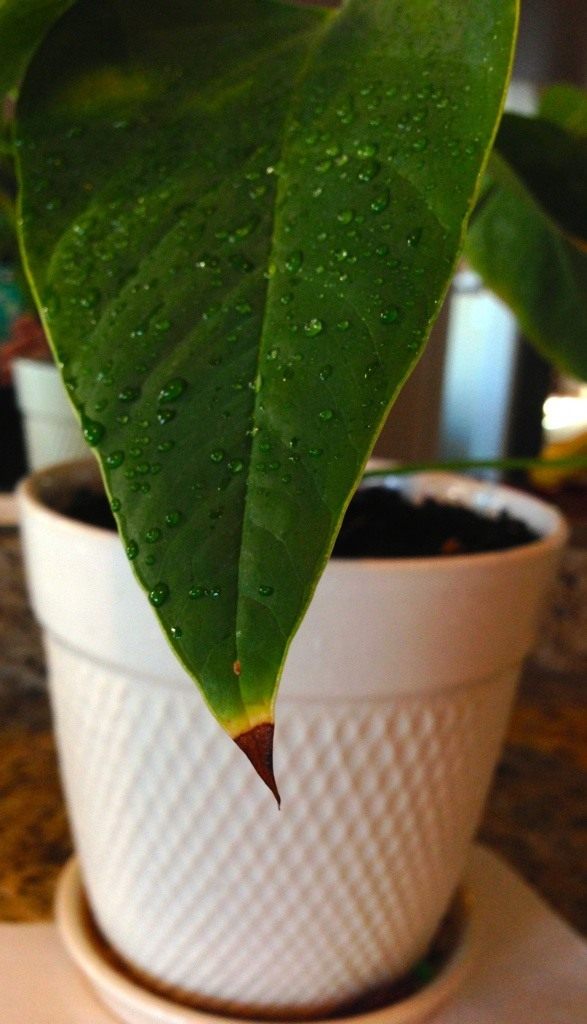

The tips of the leaves of anthurium dry out. <>
If the tips of the leaves dry out due to pests
If the plant is infested with pests, start an integrated control:
- isolate the plant from other indoor crops to prevent the spread of pests;
- wash the leaves with soapy water;
- increase the humidity of the air;
- start using special insecticides (you can evaluate the range of drugs, both biological type and with a purely chemical composition, in the nearest flower shop or garden center);
- when transplanting a plant, carefully process and disinfect the container;
- Strengthen preventive measures for the rest of the plants in the collection.
If leaf tips dry out due to containment breach
If the reason for the drying of the tips of the leaves was the violation of lighting, temperatures, feeding regime, then the conditions must be returned to comfortable for a particular species and variety of plants.
If there are clear signs that the plant is cramped in its capacity, carry out an emergency transplant. It is also carried out if the excess of nutrients cannot be corrected by a simple reduction in feeding.
The reasons
Buds
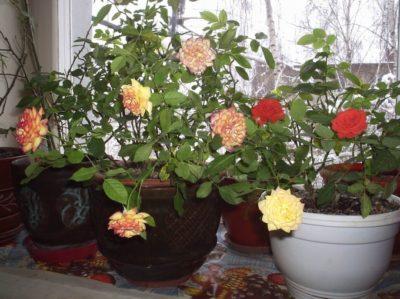

- Draft may be one of the reasons. If, at the time of airing, cold air masses fall on the rose, this will lead to the fall of the buds (buds).
- Too cold water temperature... For irrigation, only settled water at room temperature is used.
- Untimely transplant. In no case should you transplant during the flowering period, because the slightest damage to the roots is guaranteed to lead to the dumping of the buds.
- Overdried or too wet soil. There should not be long breaks between watering, but you should not abuse the procedure either. It is necessary to correctly adjust the frequency of watering.
- The air has low humidity. To increase it, they resort to conventional spraying. The contact of liquid on the buds is unacceptable.
- Depleted soil. After the rose has faded, it is recommended to carry out mineral and phosphorus-potassium dressings. Incorrectly selected fertilizers and non-compliance with the dosage often cause the buds to drop.
- Insufficient lighting. When a flower does not have enough sunlight, it slows down photosynthesis in the leaves, and this leads to the fall of flowers.
- Pests become a common cause of this phenomenon.
All the leaves
- The culprit of the loss of leaves is often the producer, since in order to give the plant a lush and voluminous appearance, he plants several flowers in a cramped pot. As a result, they begin to experience a lack of free space. The soil dries up, and nutrients run out many times faster.
- A sharp change in climate and light regime Is a common cause of wilting. After the purchase, the rose needs to get used to the new conditions of detention, and this is not always easy for her. We must not forget that the room rose likes fresh air and the rays of the sun, so the place for it is prepared in advance. To learn more about caring for a rose in a pot after purchase, click here.
- Excessively dry ground. The pet needs regular and abundant watering. When the rose has bloomed, it is transplanted into a larger container with nutritious soil and a good drainage layer.
- The spider mite negatively affects the flower. It causes the leaves to fall. To get rid of the parasite, special drugs are used.
- Indoor rose needs a sufficient amount of trace elements and minerals. Magnesium deficiency causes foliage to be shed. If there is yellowing and cessation of growth, then there is little nitrogen in the ground.
When is it a natural process for a potted plant?
If optimal conditions have been created for the plant and proper care is provided, and the leaves still fall off, do not panic. Perhaps this is a natural process by which the rose gets rid of old leaves.
Content
Indoor rose is a capricious plant. It will not grow and bloom in low light conditions. It must be placed on the south window, balcony. In the hot season, the plant must be wiped or sprayed with a spray bottle twice a day, otherwise the rose dries up from lack of moisture, spider mites can settle on it.
Placing a plant on a windowsill in summer, you should take care of shading from direct sunlight. Passing through the glass, they can burn the leaves. It is considered optimal to place a rose at a distance from the window on summer days. Thus, the plant will receive a sufficient amount of light, and its leaves will not be burned.
In addition to moderate lighting, the plant needs to provide an influx of fresh air. The room beauty is not afraid of open windows, but does not like drafts.
DETAILS: When to plant seedlings in spring 2019 planting seedlings auspicious days
In winter, when the heating is on, the flower must be provided with a high level of humidity, otherwise the rose dries up. The optimum temperature for keeping in winter is 24 degrees. Some plant species retire at this time. They are placed in a room where the temperature does not rise above 15 degrees, but also does not fall below 10. At the stage of deep sleep, it is recommended to store the plant in the basement with indicators of 5-7 0 C.
Description of the plant
Room
Indoor rose is miniature, and the compactness of planting allows you to plant a plant even in a small space. The leaves, like those of ordinary roses, are distinguished by a dark green color and a carved edge. The rose begins to bloom in the spring and continues to delight the eye until late autumn, and then a period of slow growth begins.
Street rose can grow both as bushes and in pots. The potted version is optimal, because for the winter, the plant can be brought into the house or on the veranda.A plant planted in open ground is a shrub that can grow up to two meters in height.
Flowers are usually collected in inflorescences of several pieces, and the number of petals does not exceed thirty. Flowering begins in May - July and continues until the onset of cold weather. At this time, the bushes must be cut.
How to revive the buds?
There are several reasons for the dropping of buds:
- Find out the reason for the falling of the buds:
- If they appear too early, then it is worth cutting them off during the beginning of the ovary.
- If they fall off without blooming, then this is a burn. Determining a burn is simple: the cause is usually temperature drops. The buds of garden roses are first moistened with rain, and then burned with bright sunlight.
- If the bud has not blossomed, then the reason may be the lack of air circulation. This is especially possible in enclosed spaces. This can be prevented by maintaining sufficient distance between bushes and pots, as well as by regularly pruning the plant.
Here's what to do if the flower stalks are dry on a room or garden rose:
- The first step is to find out the reason for the falling of the peduncles in a home or outdoor plant. This can be the wrong care system, pests or diseases.
- If the reason is improper care, then you need to reconsider your attitude towards the flower, regardless of where the flower grows at home or in an open area.
- If pests are found during a full examination of the rose, then the insects must be removed from the plant, and then completely treated with special means. You can buy them at any gardening store.
It is necessary to find out why the roots of the plant began to dry out:
- The main reason is the lack of proper care, in which case it is necessary to restore the system of care and watering, and, if necessary, change the place of planting or the location of the pot.
- There are also pests that directly affect the roots. In this case, the plant must be dug up, and the root system must be placed in water, and then treated with special means. After that, the plant must be transplanted into another soil.
Leaves can wither and fall for several reasons, which are easy to get rid of:
- Improper care. Restore the system of care, including watering and fertilizing the soil.
- Determine the cause. Scan the entire plant for diseases, pests, and small bugs. Aphids are a common problem as they drain the life force of the leaves. Once the problem has been identified, you need to proceed to eliminate it.
- Pests must be removed, treated with special care products.
- If necessary, the flower must be transplanted to a new location or a larger pot must be selected, it is important that the plant has good drainage.
- The reason may be a lack of nutrition, so it is worth fertilizing the plant regularly and alternating mineral fertilizers with organic ones.
Indoor rose belongs to the same family as its garden sister - Rosaceae. In height, it reaches a maximum of half a meter. Among the indoor varieties there are creeping, intended for growing in hanging pots, and bushy. The latter are the most common.
The leaves of the rose are carved, depending on the variety, they can be dull or lanceolate. Flowers in plants are of different sizes: small, medium, large. The color of the buds is very diverse - from white to black. There are monotonous, two-, three-color varieties. Flowering can last all year round. Some varieties can shed their leaves.
Indoor roses are propagated by cuttings.
Care rules for the seasons
In the summer, caring for a rose consists in watering, spraying, feeding, removing wilted flowers (with a pruner or a sharp knife, cut the peduncle to the first formed leaf bud).It is necessary to monitor the condition of the plant (so that the rose does not overheat; notice signs of diseases and pests that have appeared in time). If the rose grows very quickly, and the chosen pot is too small for it, wait until the moon growth phase and transfer the plant to a new, more spacious pot. If a rose stands on a window and is illuminated from one side, it, of course, reaches for the sun. In order not to get a one-sided bush, the rose pot must be turned from time to time to ensure uniform illumination of the bush.
Fall
In the fall, when the night temperature drops to 15-12 degrees, the rose is transferred from the balcony to the room and placed on the southern window sill. When a rose stops blooming and forming buds, it is prepared for wintering: less often it is watered (leaving the ground dry for a day or two before watering) and feeding is stopped. If possible, for the winter, the rose is placed on the windowsill of a cold room with a window (in winter, the air temperature in it should not be higher than 15-17 degrees). In an ordinary apartment with central heating, the following options are possible: a rose is placed between frames for the winter; or do not seal the window on which the rose hibernates in the fall; or fencing off the part of the window on which the rose hibernates from the rest of the room with plastic wrap. In any case, there should be no electrical and heating devices (computer, TV, heating battery, etc.) next to the wintering rose.
Before setting a rose for the winter, it is usually cut off, leaving 5 living buds on each branch; leaves are not removed. Pruning is done when the moon is in the growing phase. If you do not prune in the fall, then in the summer of next year the rose will bloom much later, the flowering will be less abundant, the bush will not look very neat. If you haven't pruned the rose before wintering, pruning can be done in the spring as well.
In winter, the rose will not grow and bloom, but will shed the remaining leaves and look very sad; at this time, caring for the plant consists in rare watering (after the soil dries up, water it after 2-3 days) and spraying. When wintering a rose in a room with central heating, it is recommended to put the plant pot on a pallet with wet pebbles or gravel and make sure that the stones are always moist - this will save the rose from excessive dryness of the air.
Spring
In spring, the rose has new leaves and twigs. At this time, they begin to water it more abundantly, the dried earth remains dry for no more than one day until the next watering. At the beginning of growth, the rose must be fed with a full mineral fertilizer, or a solution of mullein or bird droppings.
- Mullein solution: place 1/3 mullein and 2/3 water in a container, close and leave for 3-4 days, stirring occasionally. After fermentation stops, when the solution becomes lighter, it is ready (the fermentation time depends on the temperature, sometimes it takes 1.5 weeks). The ready-made mullein solution is diluted with settled tap water in a ratio of 1:15 (one part of the solution to 15 parts of water) - the feeding is ready.
- Poultry droppings solution: one part of poultry droppings is poured with 200 parts of hot water and insisted for two days. The finished solution is diluted with settled water in a ratio of 1:25 (1 part of the solution to 25 parts of water) and used for feeding.
The rose is fed after the usual watering. For the formation of large flowers, as soon as the buds are tied, the rose must be fed once a week. During the growth period, during the formation of buds, the rose should not experience a lack of moisture or light. The plant is placed on the lightest window, watered as the soil dries up with settled water, in the evenings it is sometimes sprayed with cold boiled water from a thin spray bottle. As soon as the plant has outgrown the pot, it must be transferred, without disturbing the roots, into a larger pot. It does not matter in what season of the year the rose is transplanted; if necessary, you can transplant even in winter, but the moon should be in the growth phase.
When the spring frosts pass and a warm night temperature is established, it's time to take the rose out to the balcony or garden. In the first weeks, the rose must be gradually accustomed to the bright sun. To do this, the plant is first exposed in a shady corner of a balcony or garden and only after about two weeks is transferred to a sunny place. If there is no shady corner, use a "sliding shadow" from a sheet of thick paper with stripes cut in a checkerboard pattern of 8x2cm. Cover the rose with this leaf for 2-3 weeks.
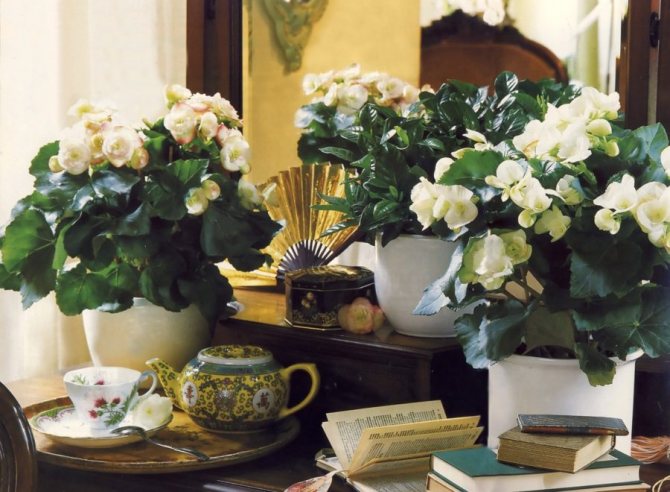

The period of rehabilitation of the purchased plant
At home, it would be good to recreate the conditions for the chosen one in which she was before: air temperature, humidity, watering regime, location in the shade or in a bright place ... The similarity of the conditions of detention will help the newcomer to adapt faster. Later, it is necessary to provide for her proper care.
After adaptation, the rose will start growing again, and with proper care, it will bloom! This will happen in about 1-1.5 months. Have you bought a rose in a pot and don't know how to care for it? Read the care guide below.

